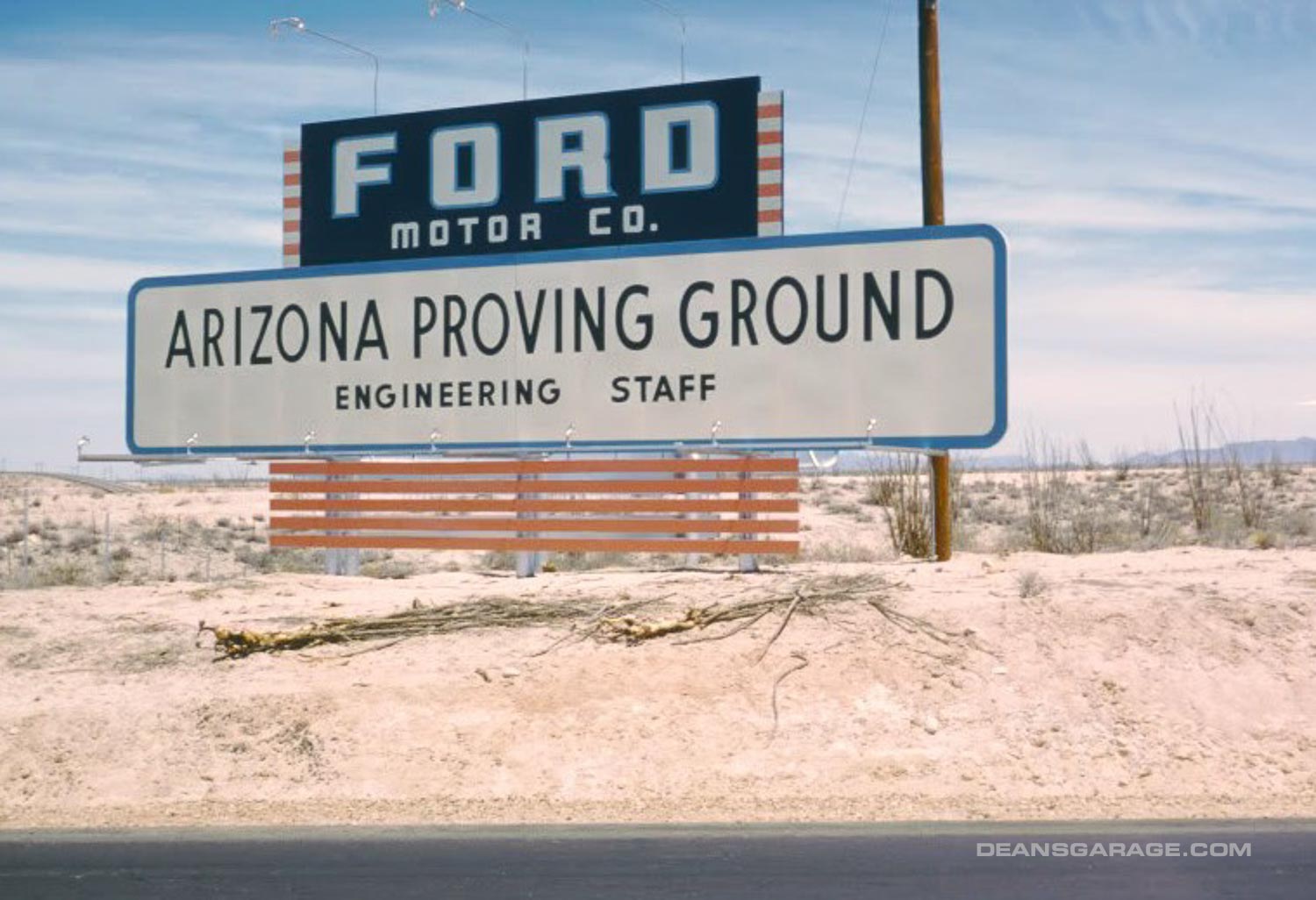
Arizona Proving Ground
By Todd Duhnke
In a previous post on Dean’s Garage, we reviewed Ford’s testing facilities in Dearborn. Specifically, The Dearborn Development Center. In this post we will head west and look at their Arizona Proving Ground.
As stated earlier, with an expanding product line, and also three goals in mind to find any bugs in the pre-production product, to find ways to improve the product once introduced and lastly to better test for durability, efficiency, economy and comfort, Ford needed additional space. So, in 1953 Ford began to acquire land near the tiny town of Yucca, Arizona, which is about 25 miles south of Kingman in Mojave County for an additional testing facility beside Dearborn. The goal also was to supersede a much smaller facility near Phoenix that had been used since 1946.
Actually, Ford started acquiring land here about a year before doing the same just outside of Romeo, Michigan for the Michigan Proving Ground. Both test tracks were being developed over a remarkably similar period of time. We’ll cover the Michigan Proving Ground story in an upcoming post.
Land for the Arizona Proving Ground was primarily acquired from the U.S. Air Force. Starting in 1943, and during WWII, this land was used by The Army Air Corp as a training facility and gunnery range. It was named the Yucca Army Air Field and was a supplement to the larger, nearby Kingman Army Air Field. By 1946, and the war won, the field was deemed as surplus and idled until Ford bought the property in 1954. To have enough space Ford also bought adjacent land from Mojave County and a few private landowners.
At 3,840 acres the Arizona facility is remarkably similar in size to Romeo. And both have a high banked, five-mile-long high-speed test tracks. Construction of the high-speed test track in Arizona was started in September of 1954 and was completed by July of ’55. In total, APG has some 50 miles of concrete, earthen and gravel roads as well as access to some trails off property that vary in elevation from 500’ to 6,500’.
Just like Dearborn, and later Romeo, there are all kinds of challenging surfaces designed to punish and test a car’s durability to the limit. One of the most interesting sections is segment of the 1952 realignment of old Route 66.
Obviously the climate and altitude gave Ford a completely different environment to test compared to both Dearborn and Romeo. Temps in summer can reach 120F and average 103F. Much of the terrain is rugged with off road trails which proved to be helpful when testing four-wheel drive systems like on the ’66 Bronco. Similar to Romeo, there are many segments of cobblestone, washboard or rough pavement laced with chuckholes. There is also an exceptionally smooth 17-acre asphalt skid pad that can be flooded with water.
One unique feature the APG has that is not available at either Dearborn or Romeo is a salt environment to test for corrosion resistance. Some cars are driven repeatedly through several salt baths, salted road surfaces and a salt spray booth.
The Arizona Proving Ground was formally dedicated on January 19, 1956. These were quite the ceremonies including the Governor of Arizona, numerous local and state officials and, naturally, several Ford executives such as Ernest Breech, Ford’s Chairman of the Board and Earl S. MacPherson, VP-Engineering. The local citizenry was also invited and even the school kids had the day off so they could attend.
So, let’s delve into the pictures. Unfortunately, most of the pictures of the facility I have, or Ford today has, were taken from January 28, 1956 through about the 31st. Logical I suppose considering how remote the APG is and how far Ford Photographers would have to travel to get there.
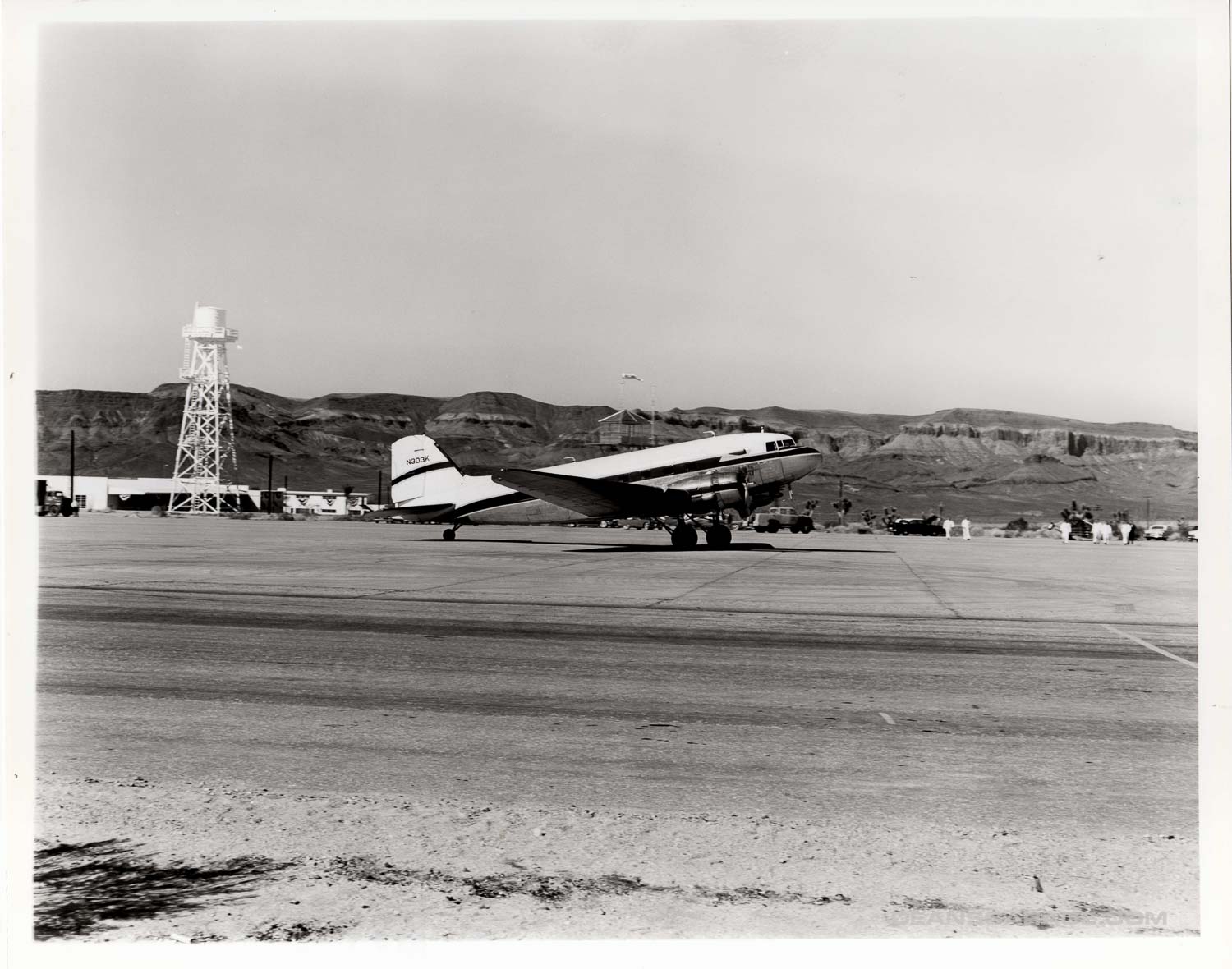
Seen arriving at the APG is one of the Ford company DC-3’s, N303K. One of the benefits of the site were two 6,000-foot paved runways in the middle of the facility. Ford used to have several DC-3s, Convair 240s and 340s in its corporate fleet. One of these 240s was later modified with turboprops, became a Convair 580, and carried the DC-3’s old registration of N303K! Imagine, a Ford corporate aircraft powered by GM Allison engines! I also can’t imagine how long it took to fly this DC-3 from Detroit to Yucca! As Jimmy Buffett once said, “that’s a mighty long airplane ride.” Note in the background the old Air Force water tank and just out of the picture is the control tower, which still exists today.
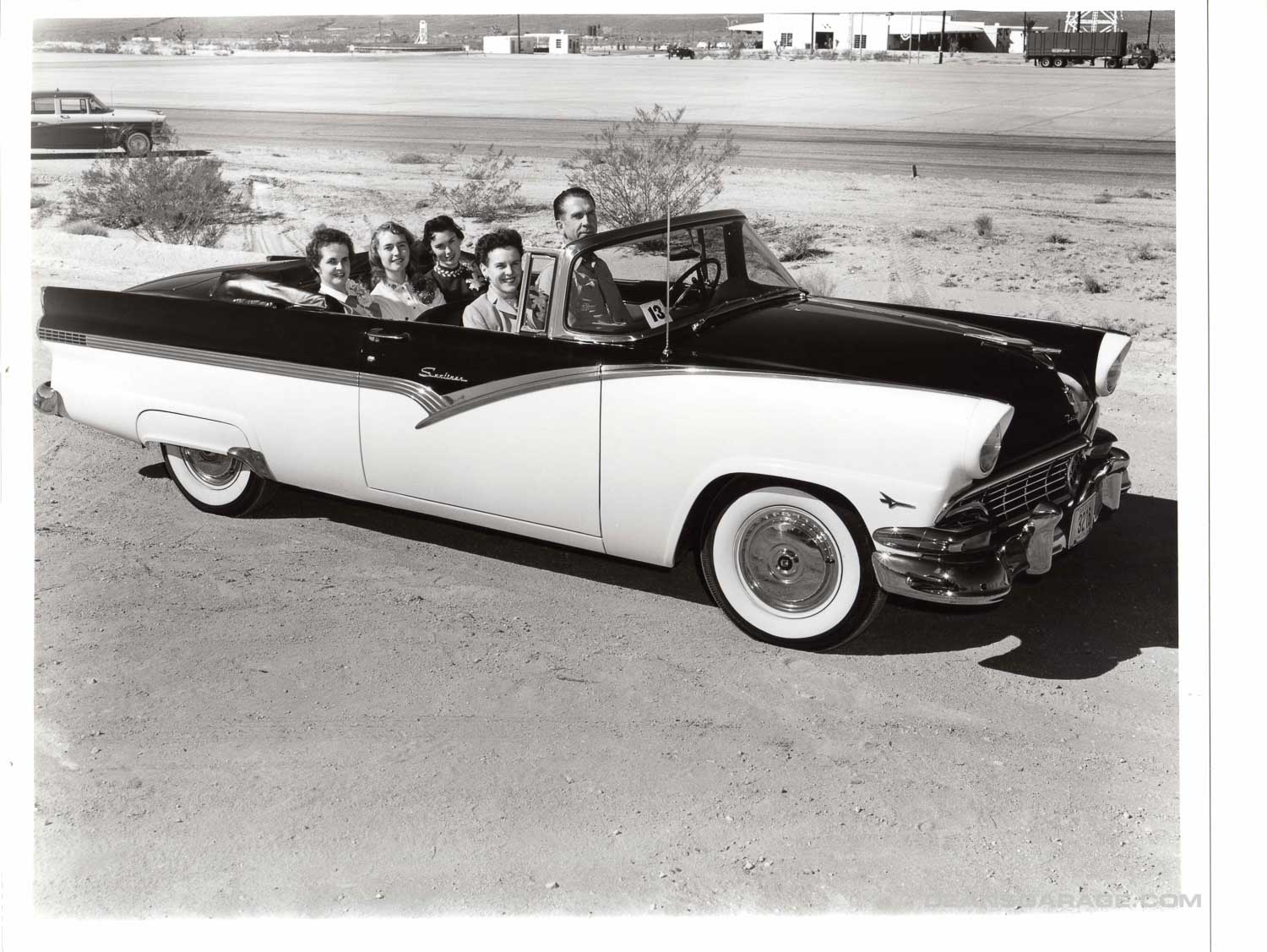
Upon arrival for the ceremonies dignitaries and their wives were given a driving tour of the facility. Some in this Raven Black and Colonial White ’56 Sunliner. Ford used to call its two-toned paint designs “Styletone.” Most had the lighter color on top of the darker color. But many Sunliners like in these photos had what was called “Reverse Styletone” where the darker color was on top.
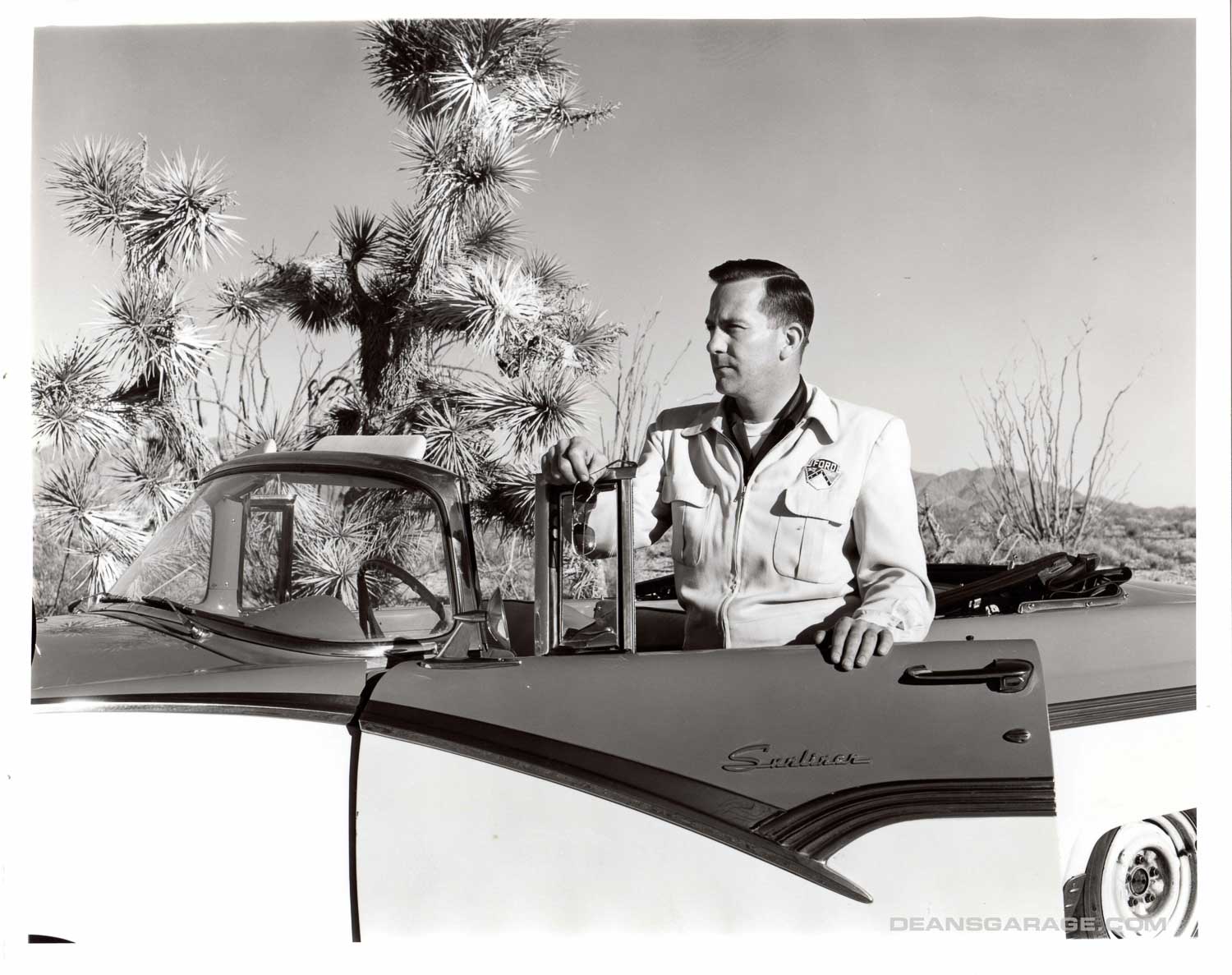
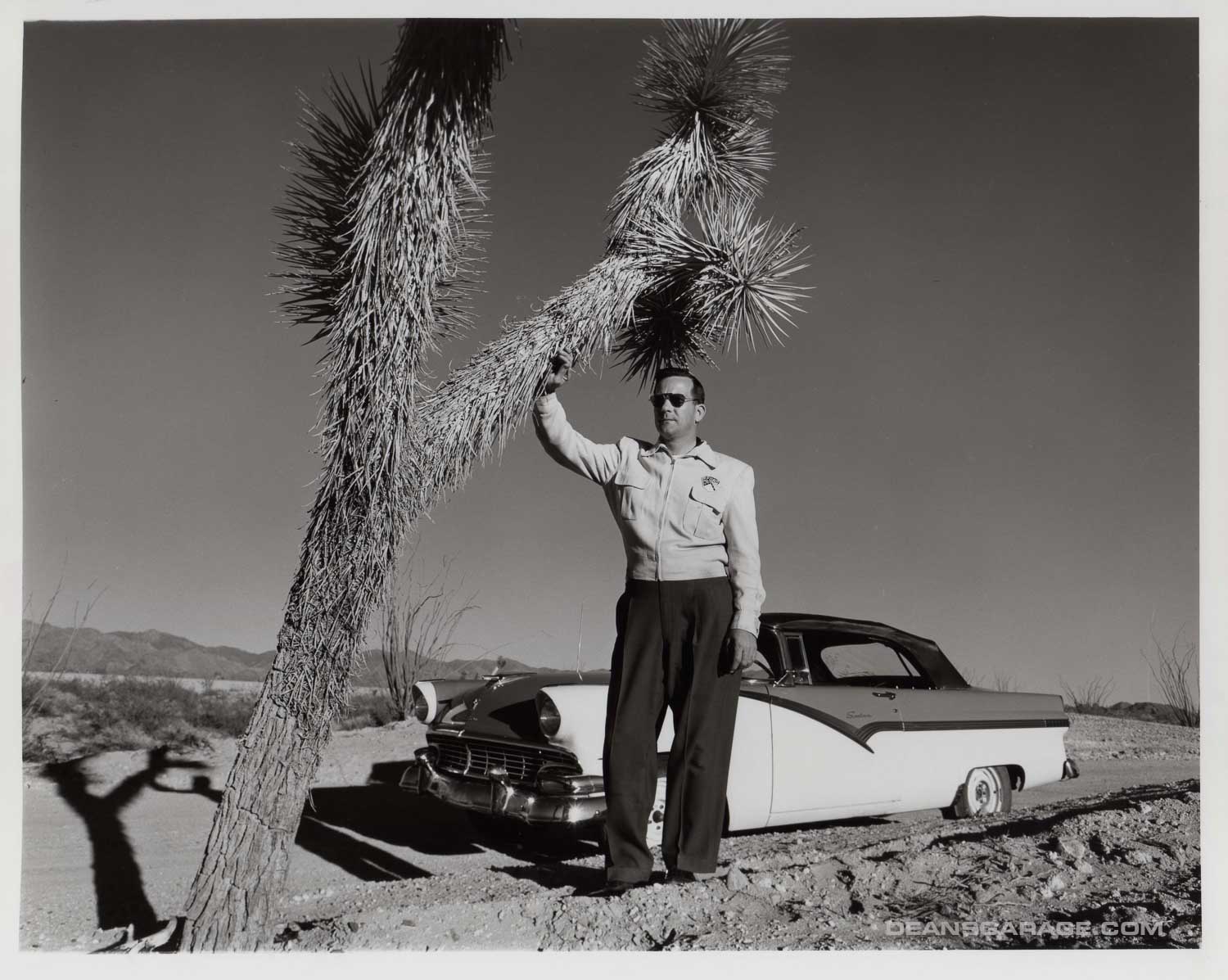
Ford photographers captured many publicity worthy shots to share with the media including these two of a Ford test driver and his ’56 Sunliner out on one of the gravel tracks. Note the classic Ford Crest on his jacket.
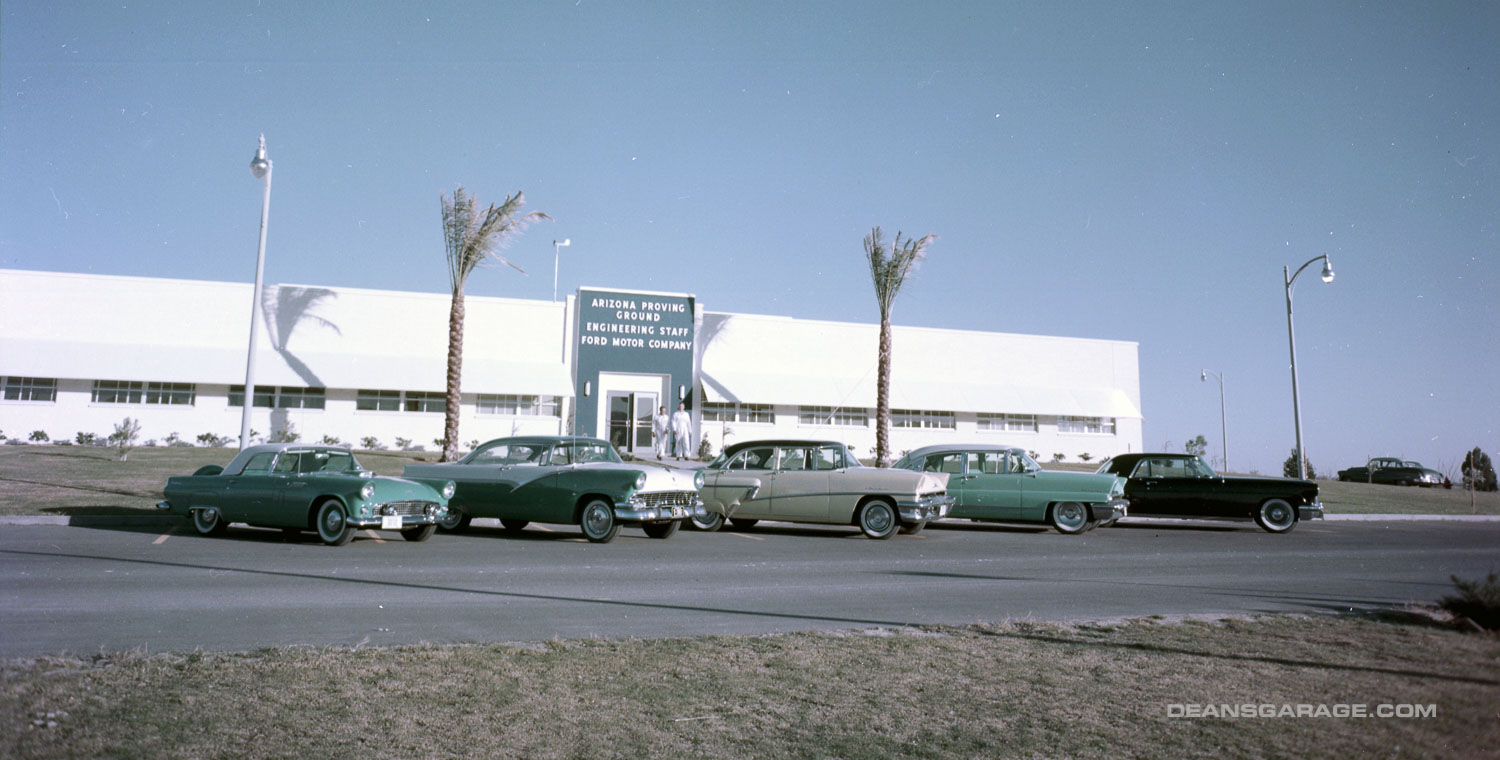
Here before the day of the ceremony is a lineup of all Ford’s products for 1956 in front of the 109,000 sq ft office and garage complex. In addition to this building where the cars were serviced, modified, and documented, Ford elected to keep many of the facilities the Army Air Corp had earlier built, including housing for some of the staff.
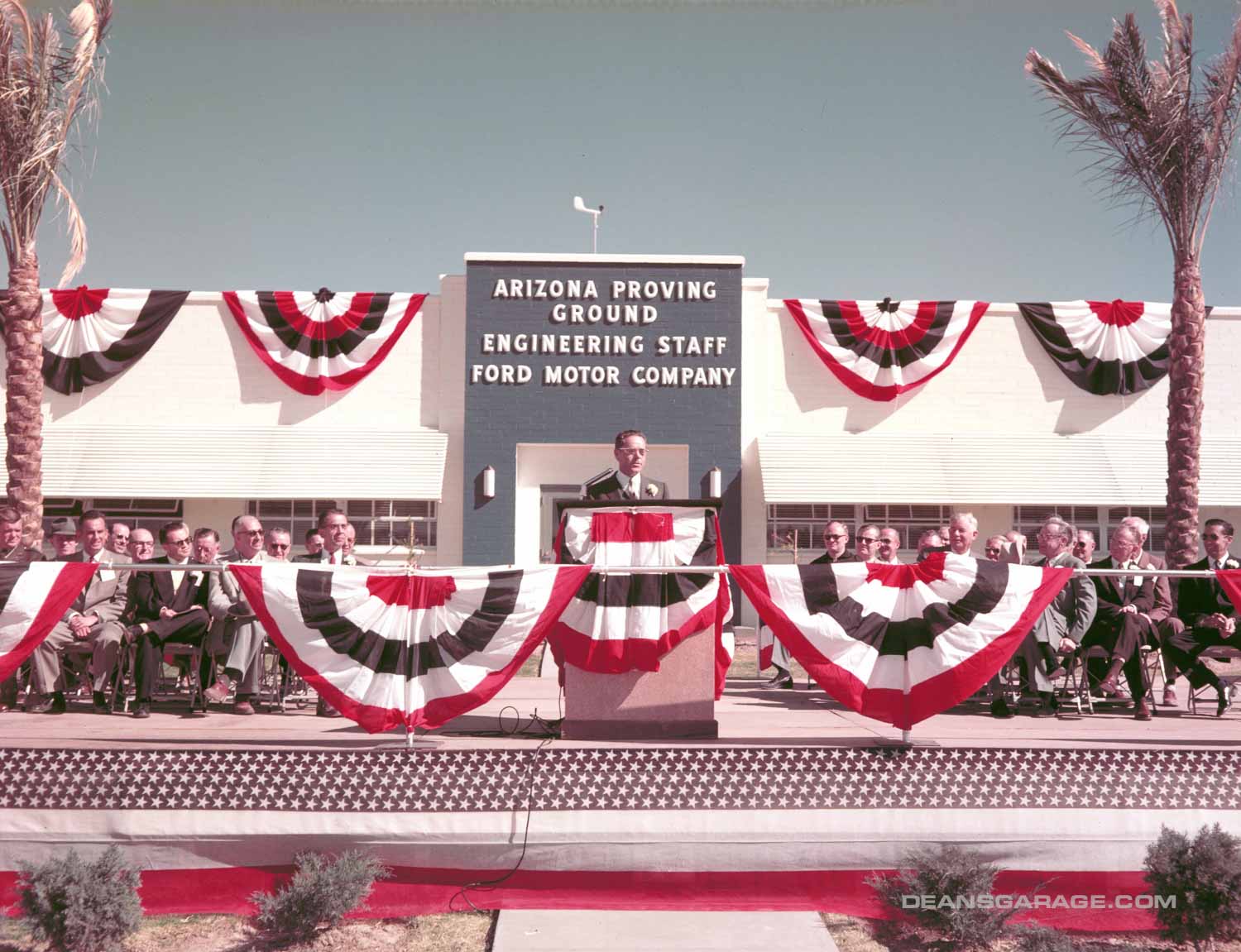
Ernest Breech is addressing the crowd attending in front of the new office and garage.
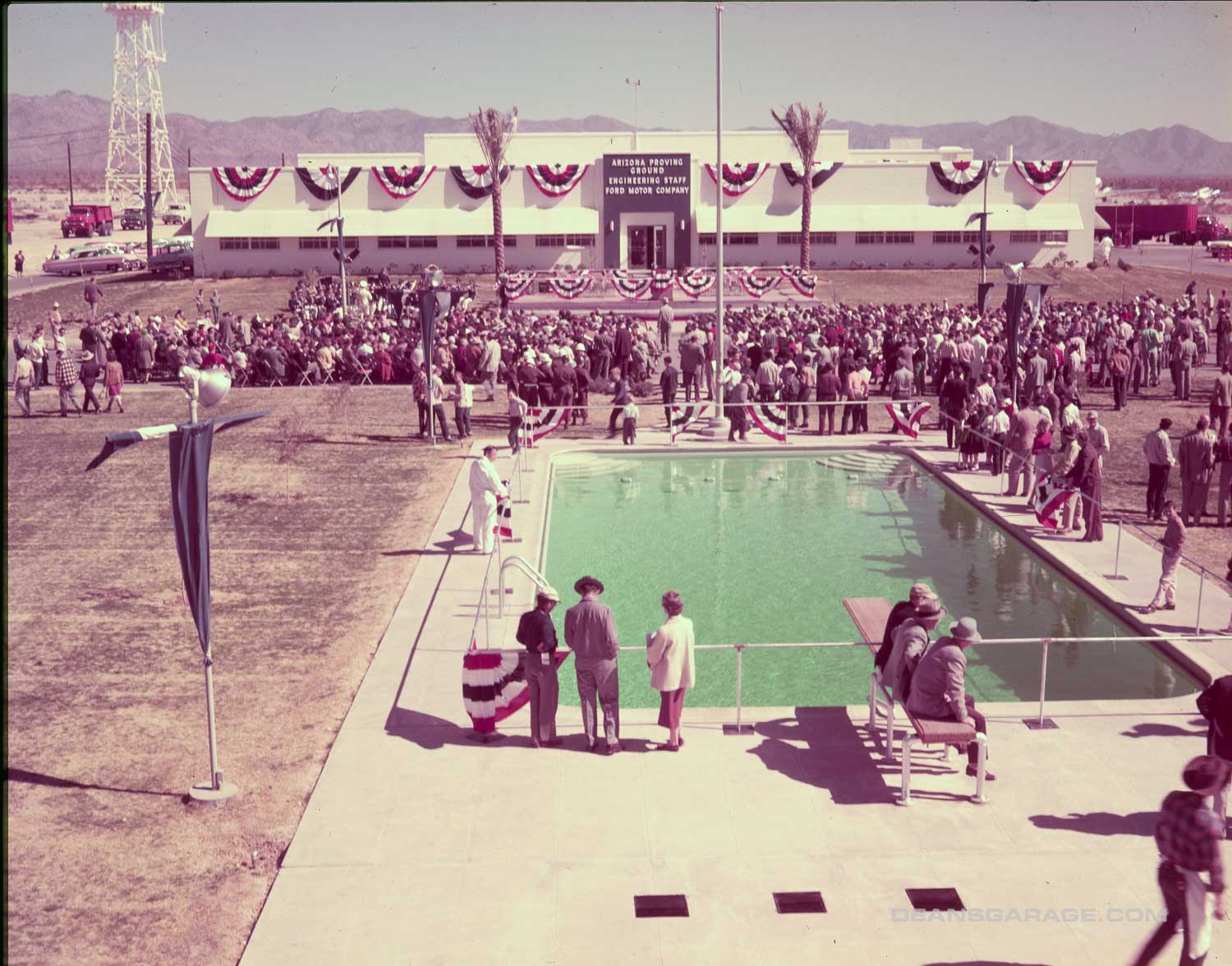
No, Ford did not install a swimming pool for the test drivers to kick back in. It was there when Ford bought the facility.
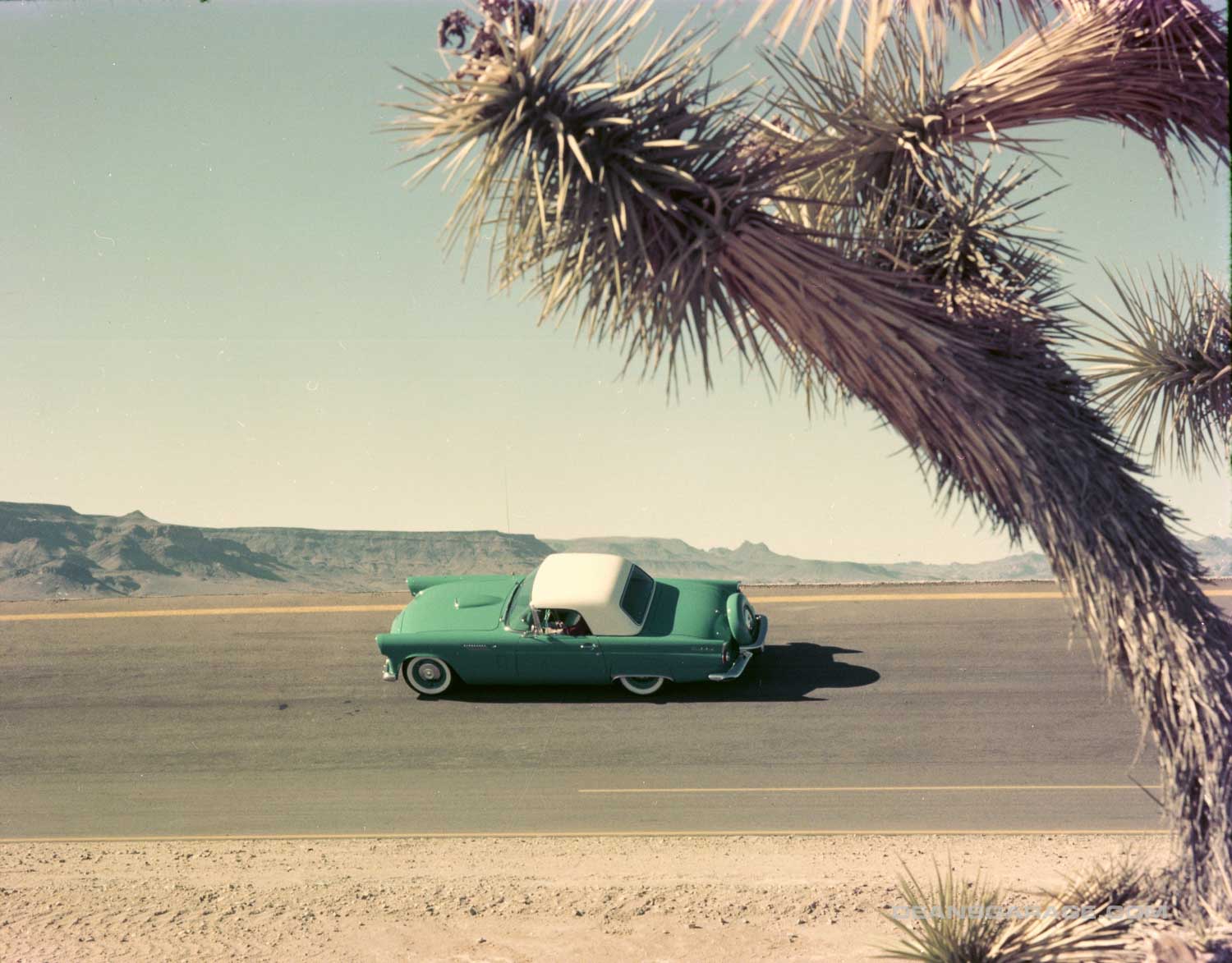
Photographers tried to catch all the models in various parts of the facility. As documented with this Sage Green ’56 Thunderbird out on the banks of the high-speed test track. In the background one gets a sense as to just how remote this site is.
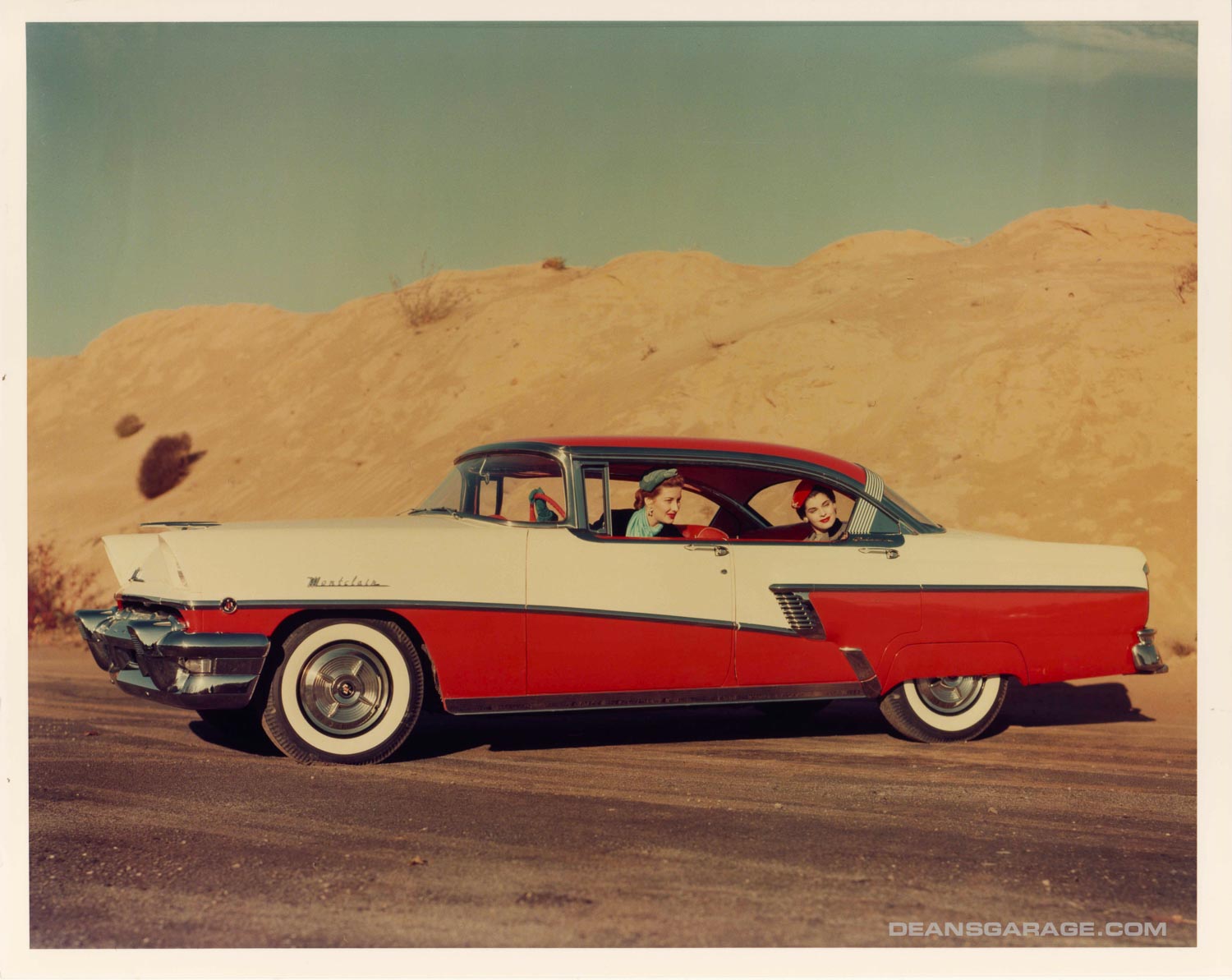
While the boys were out on the track, the ladies had commandeered this ’56 Mercury Montclair Phaeton four door hardtop. Remember the stylish four-door hardtops all manufacturers offered? They only lasted from ’55 to the early 1970s.
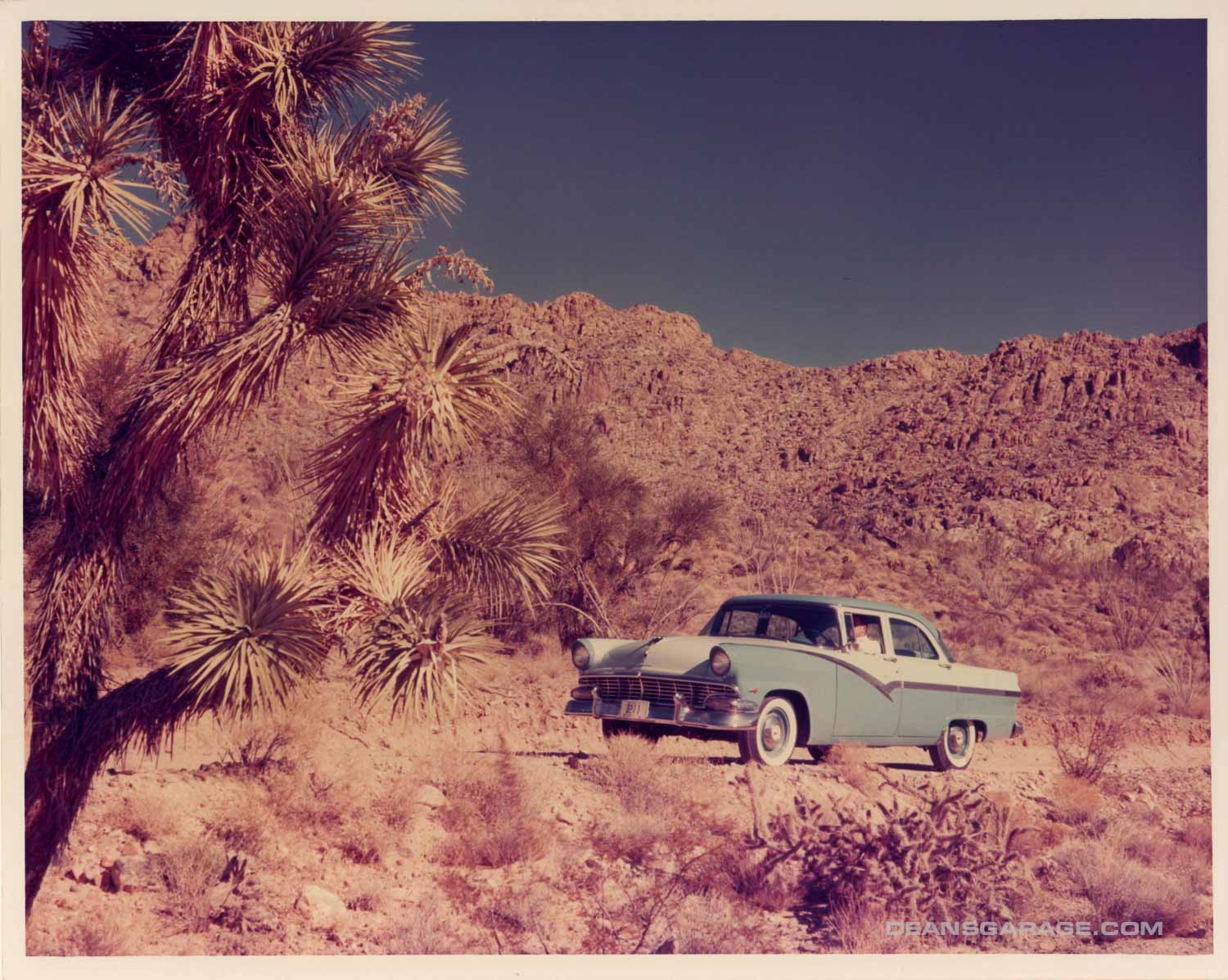
One can see just how rugged the terrain becomes slightly east of the test track. No match however for this ’56 Fairlane Town Sedan. Today we see cars of this vintage through a different lens, usually as Thunderbirds, Continentals, hardtops and convertibles. Back then those were the rarity and vastly more common sedans truly dominated the scene.
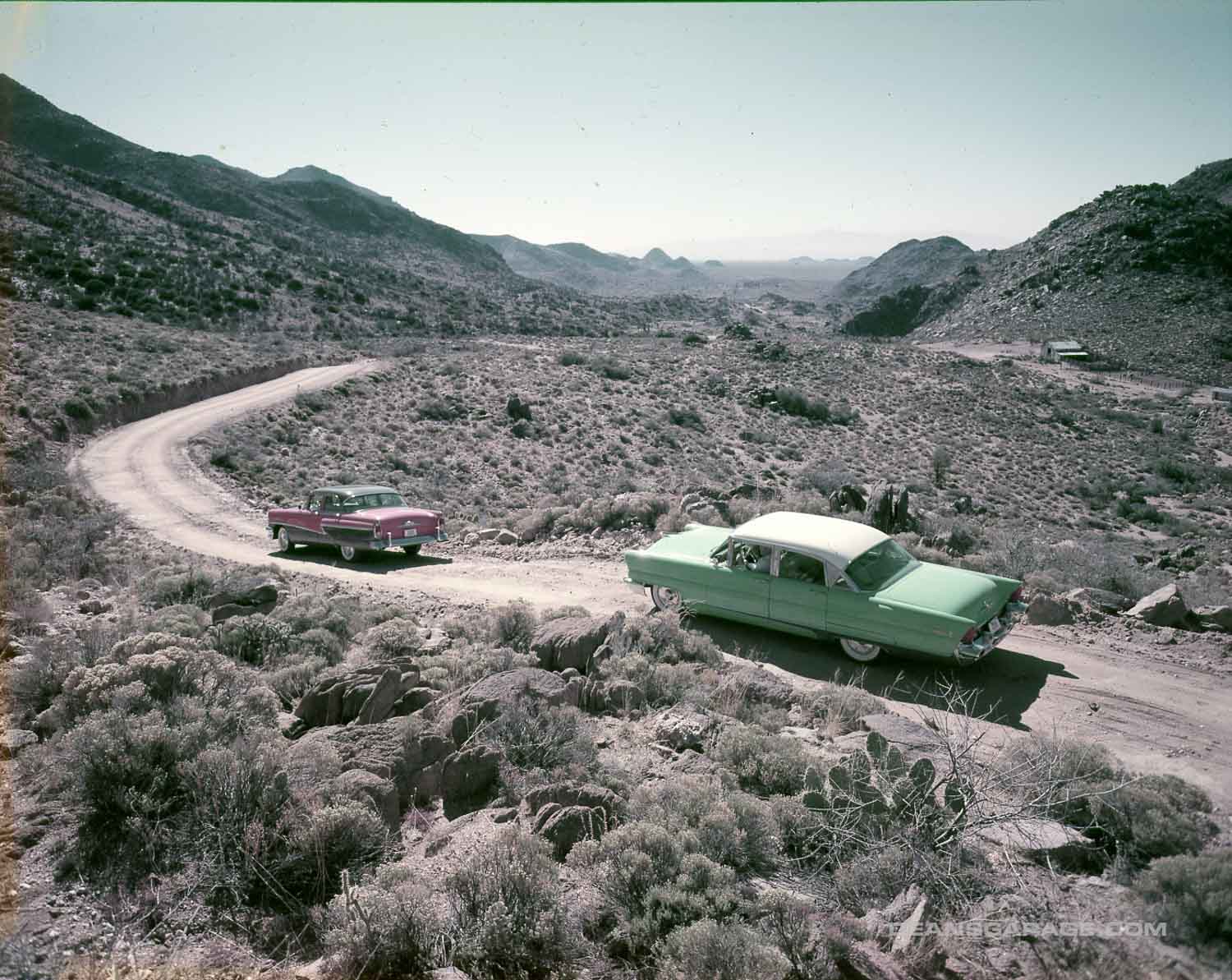
Another gravel trail out in the middle of nowhere! Note that the Summit Green and Starmist White ’56 Lincoln Premier has air conditioning. Probably no need for it on this late January day.
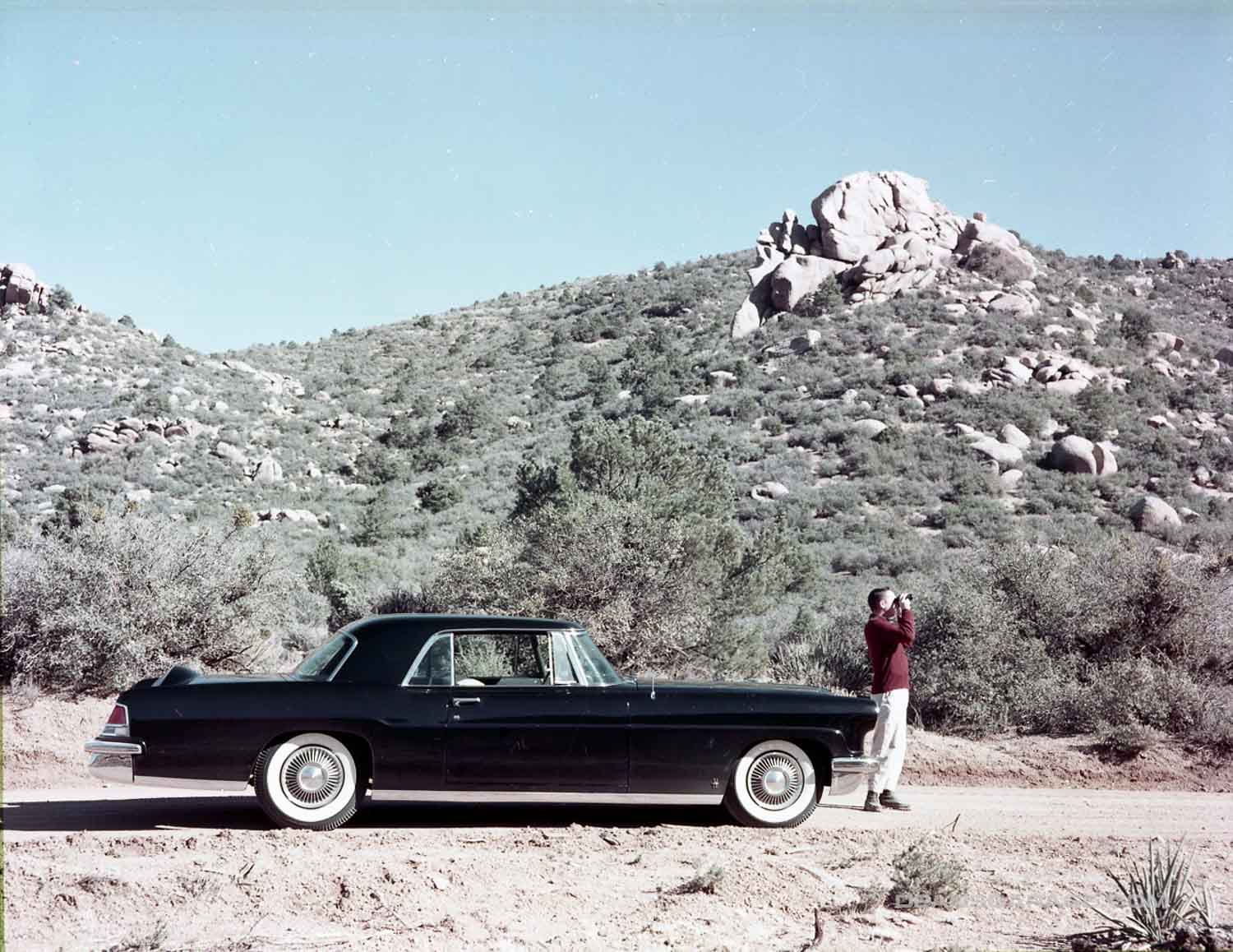
The Continental Mark II had only been introduced to the public a few months prior to this photo being taken. This rather scruffy pre-production Mark II had been tested for a good while as evidenced by the numerous small dents and scratches in the paint.
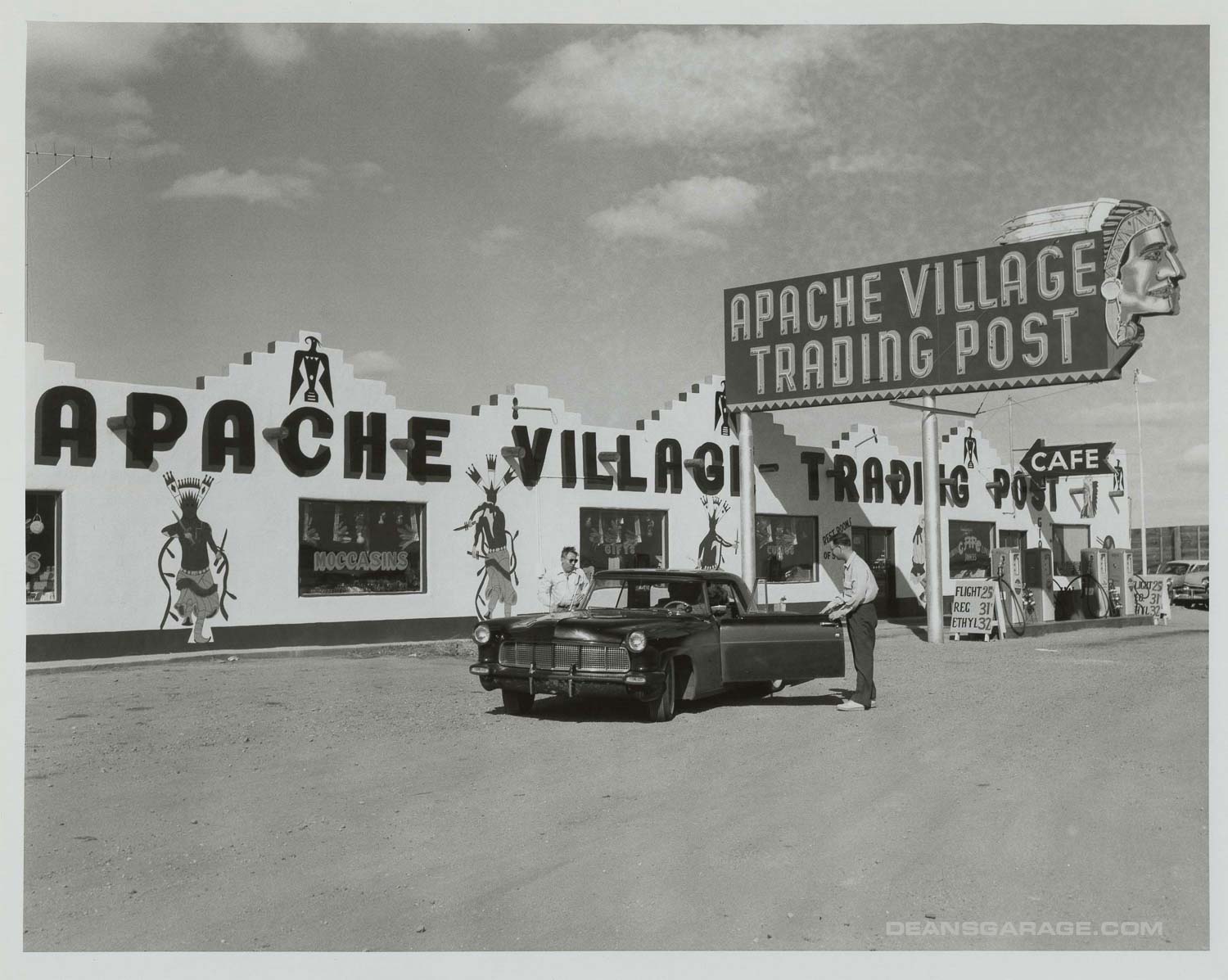
In June of 1955 Ford boldly drove two flat black pre-production Mark IIs from Dearborn to the APG and back. These Marks had their chrome blacked out to help disguise them and traveled with a ’55 Thunderbird, and ’55 Fairlane. A ’55 Cadillac Coupe DeVille and ’55 Lincoln joined the caravan for comparison purposes.
According to Ford Engineer Elmer Rohm, who made the trip, it took six days to get from Dearborn to APG. The timing of this trip would coincide with the dedication of the five-mile-long track. The two Mark II’s were also initially disguised with cardboard, but that soon got discarded.
Gas and go at the Apache Village Trading Post near Gage, New Mexico. Even this far from the city, premium gas was only .32 a gallon.
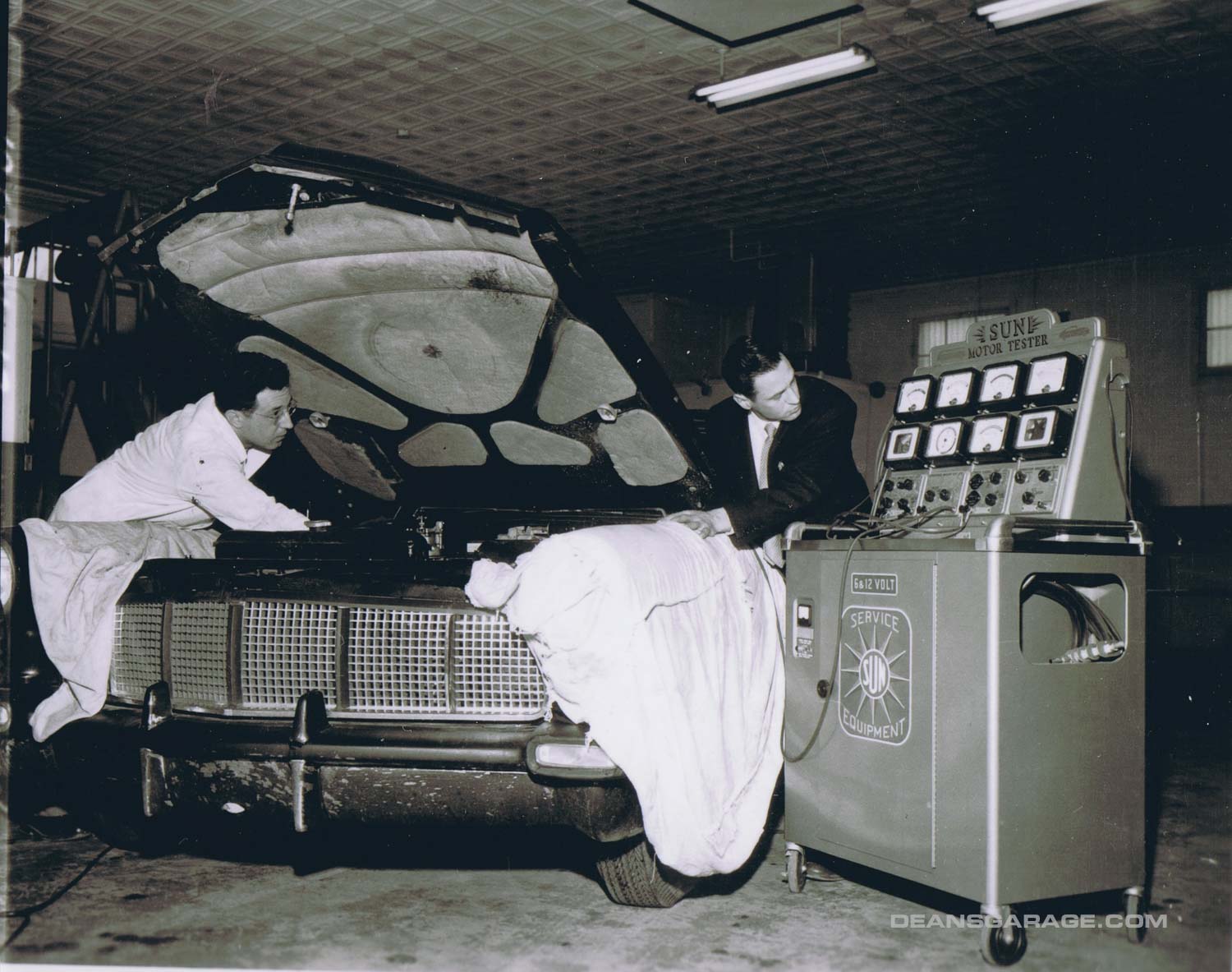
Here that same Mark II is connected to a classic Sun Motor Tester. Today, restored Sun machines are highly valued. And for a lot of applications, irreplaceable!
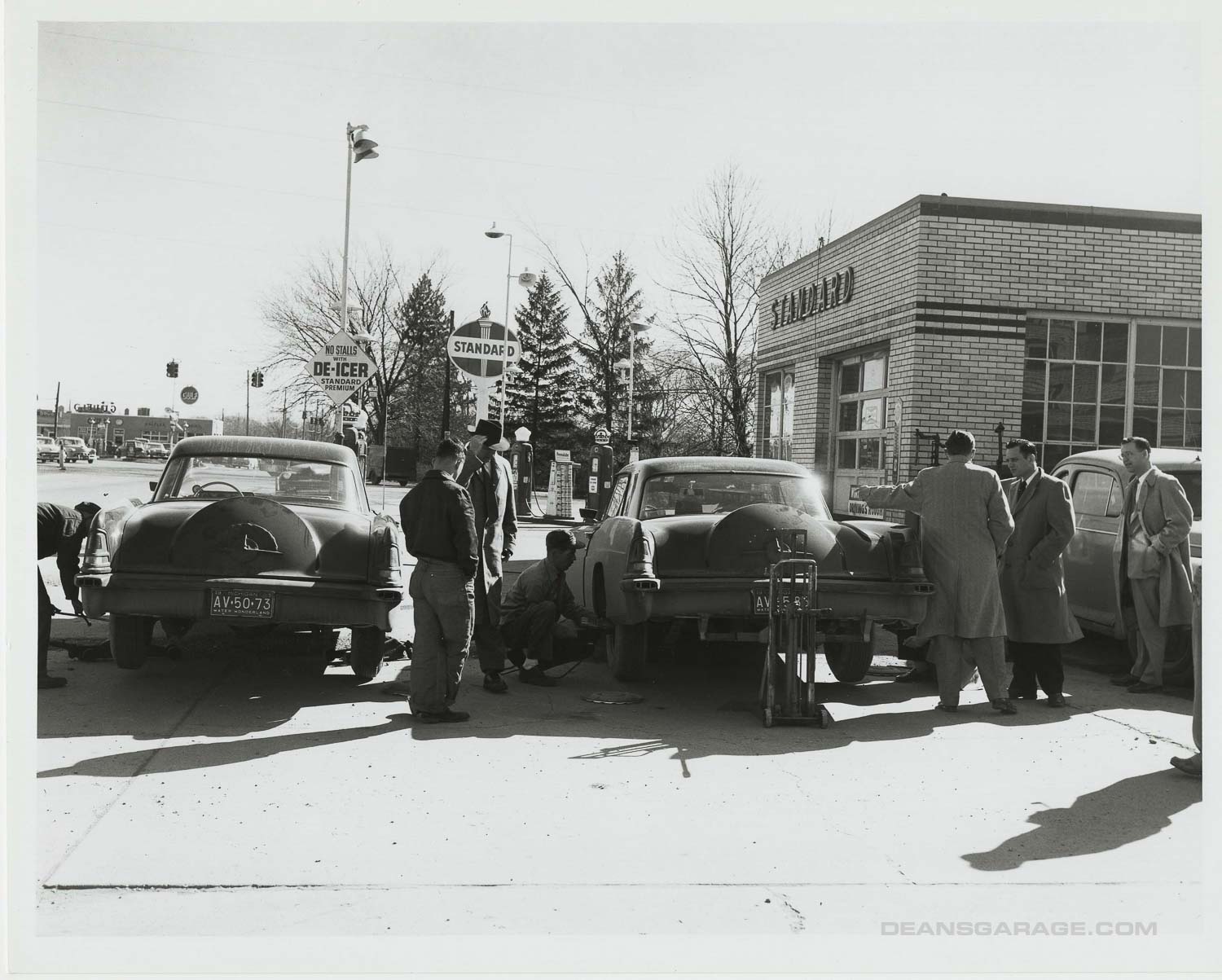
Rohn reported that while at the proving ground racing tires were installed on one of the Marks and a speed of 115 mph was achieved. The caravan took eight days to return to Dearborn arriving near July 5, 1955.
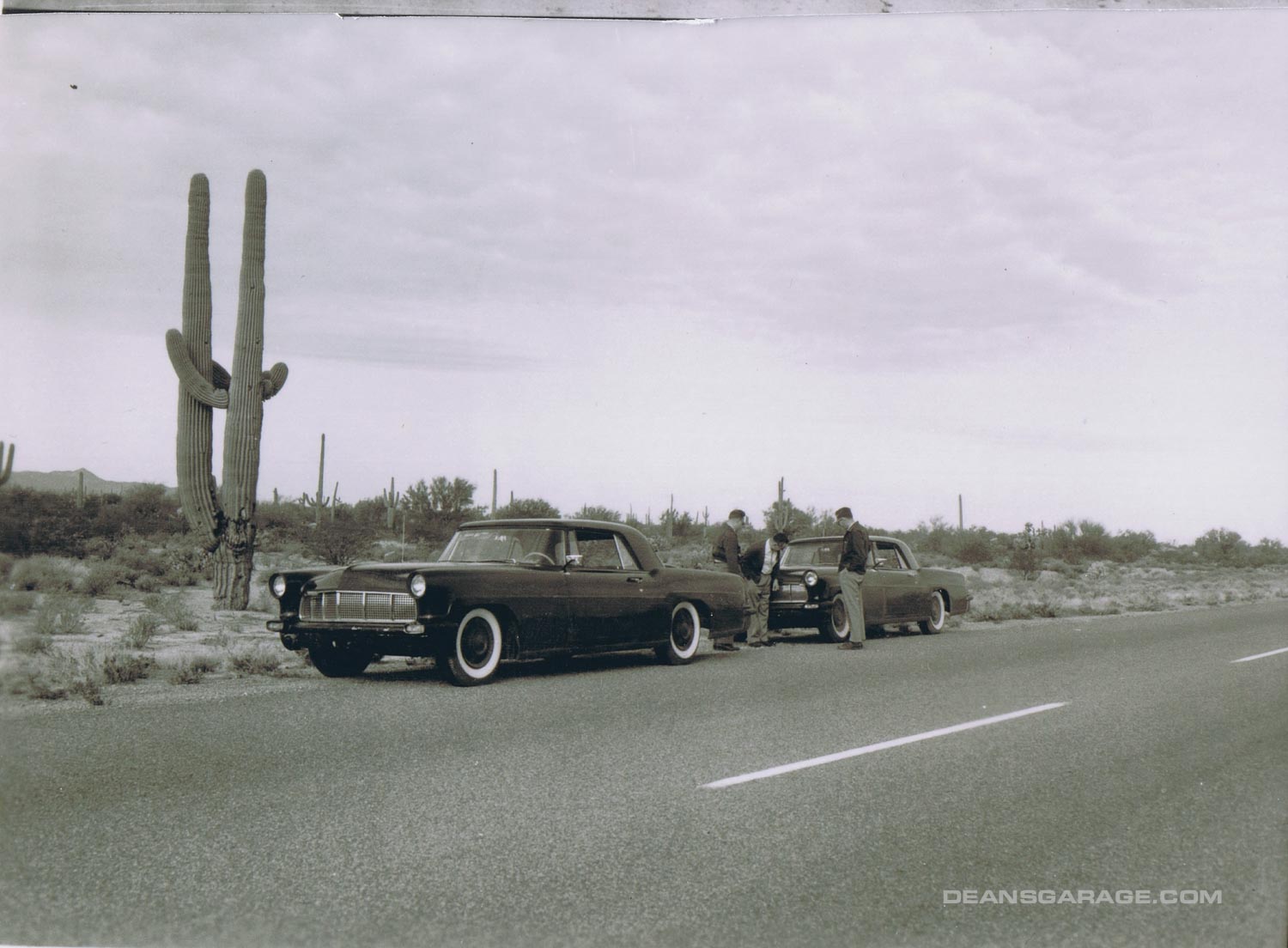
At some point on the return leg Rohn had a mechanical difficulty and got behind. In an effort to catch up he was caught speeding at 95mph and was given a $25.00 ticket.
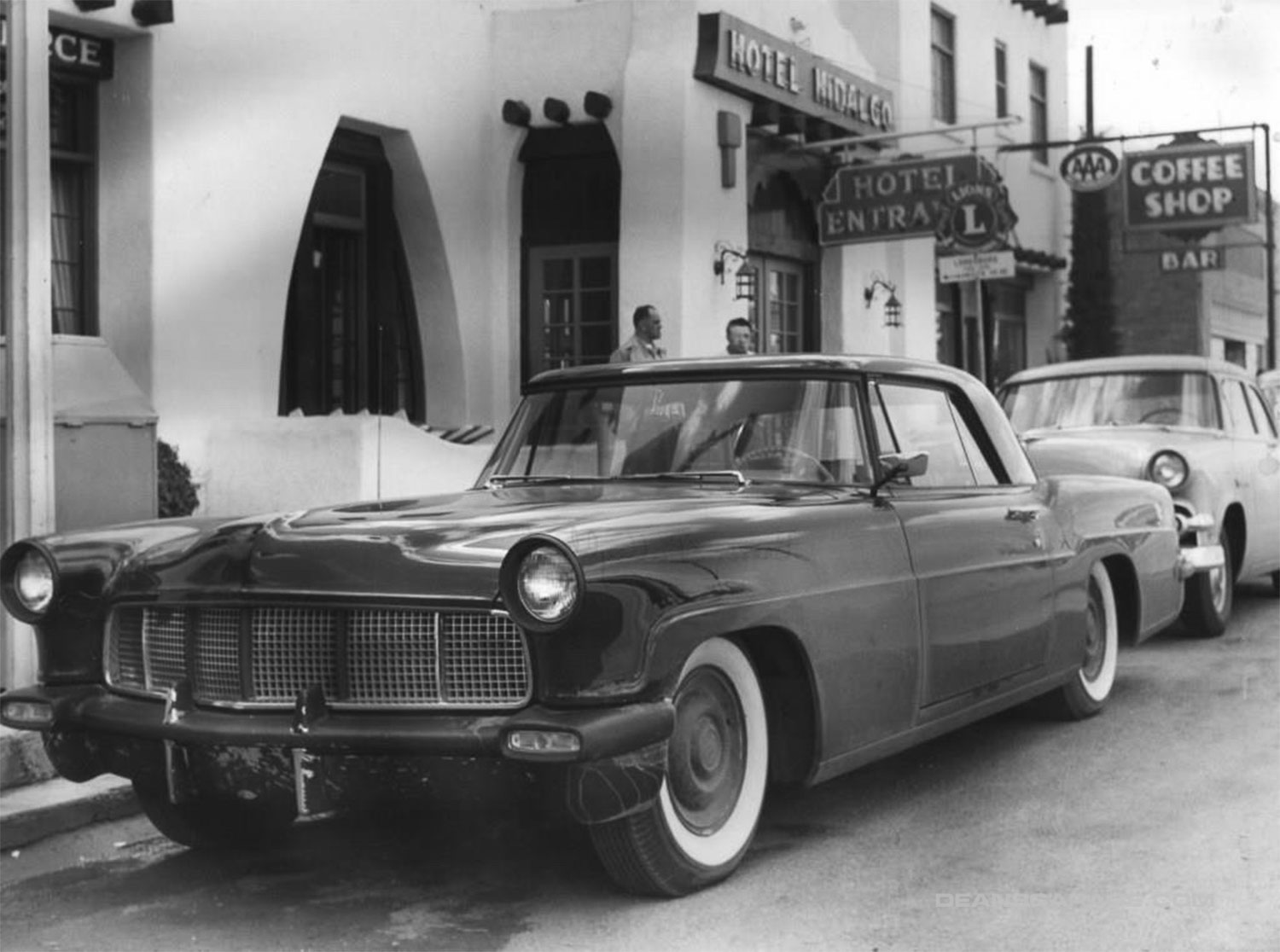
An overnight stop at the Hotel Hidalgo in Lordsburg, New Mexico. Hotel, café and a large Texaco station.
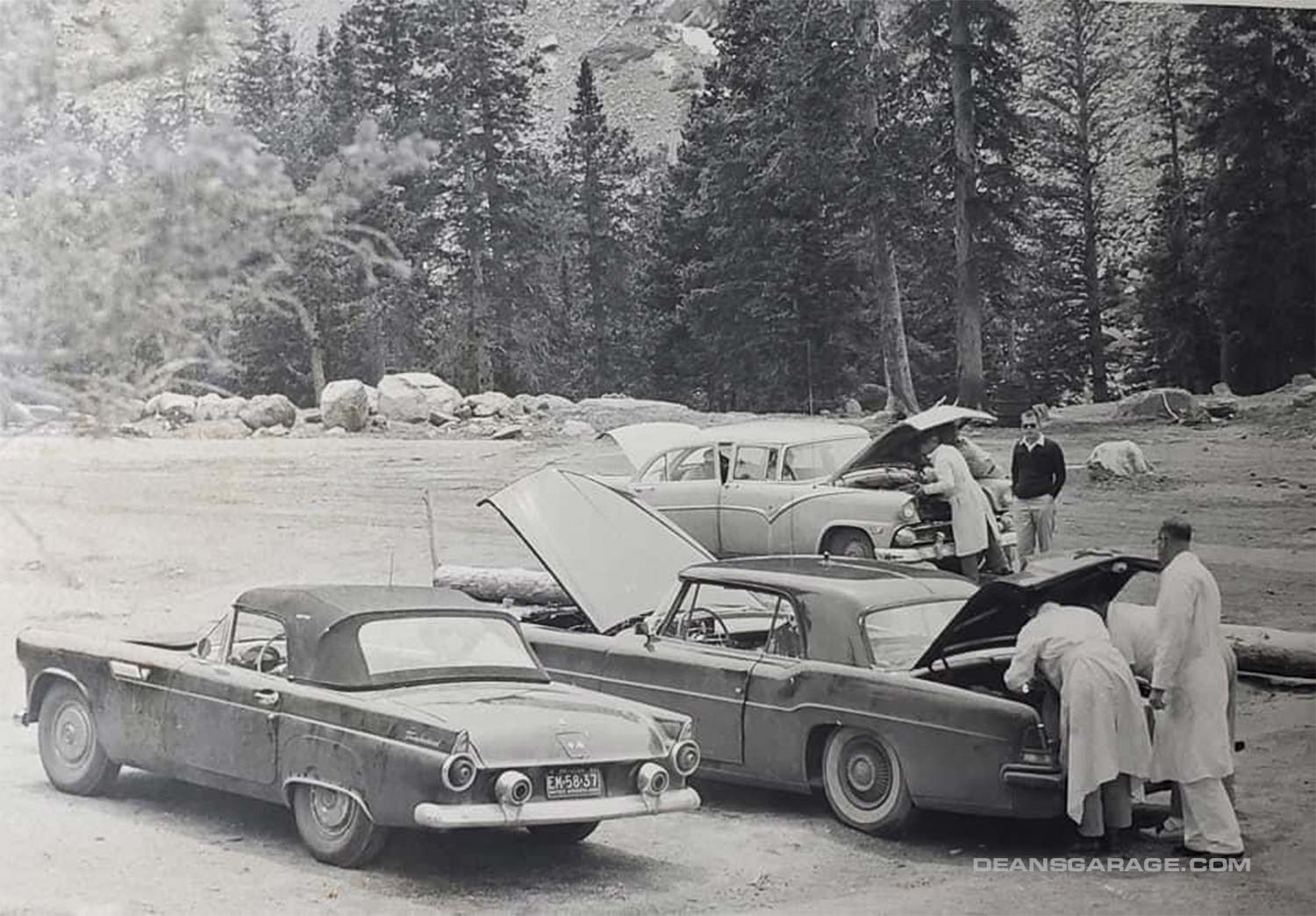
A routine “check the oil” stop for the caravan.
It’s been reported that along the way the caravan was stopped a couple of times by the local constables merely wondering what was going on.
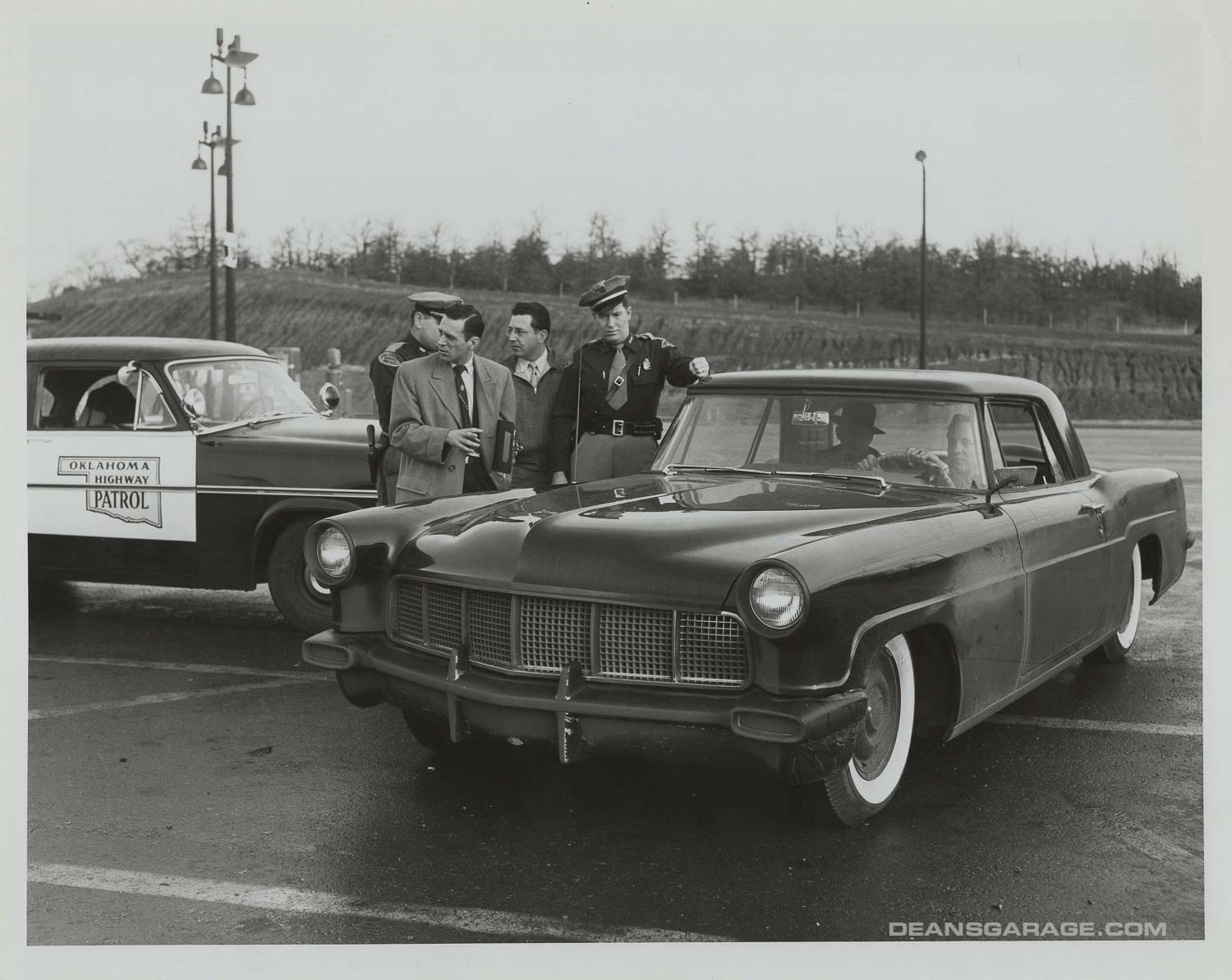
The Oklahoma State Police pulled the group over on Route 66 as one of the Troopers realized these were something new and merely wanted a closer look at the upcoming models.
It is conceivable that the Marks made two trips to Arizona as I note in several of the photographs the crews are wearing heavier outerwear.
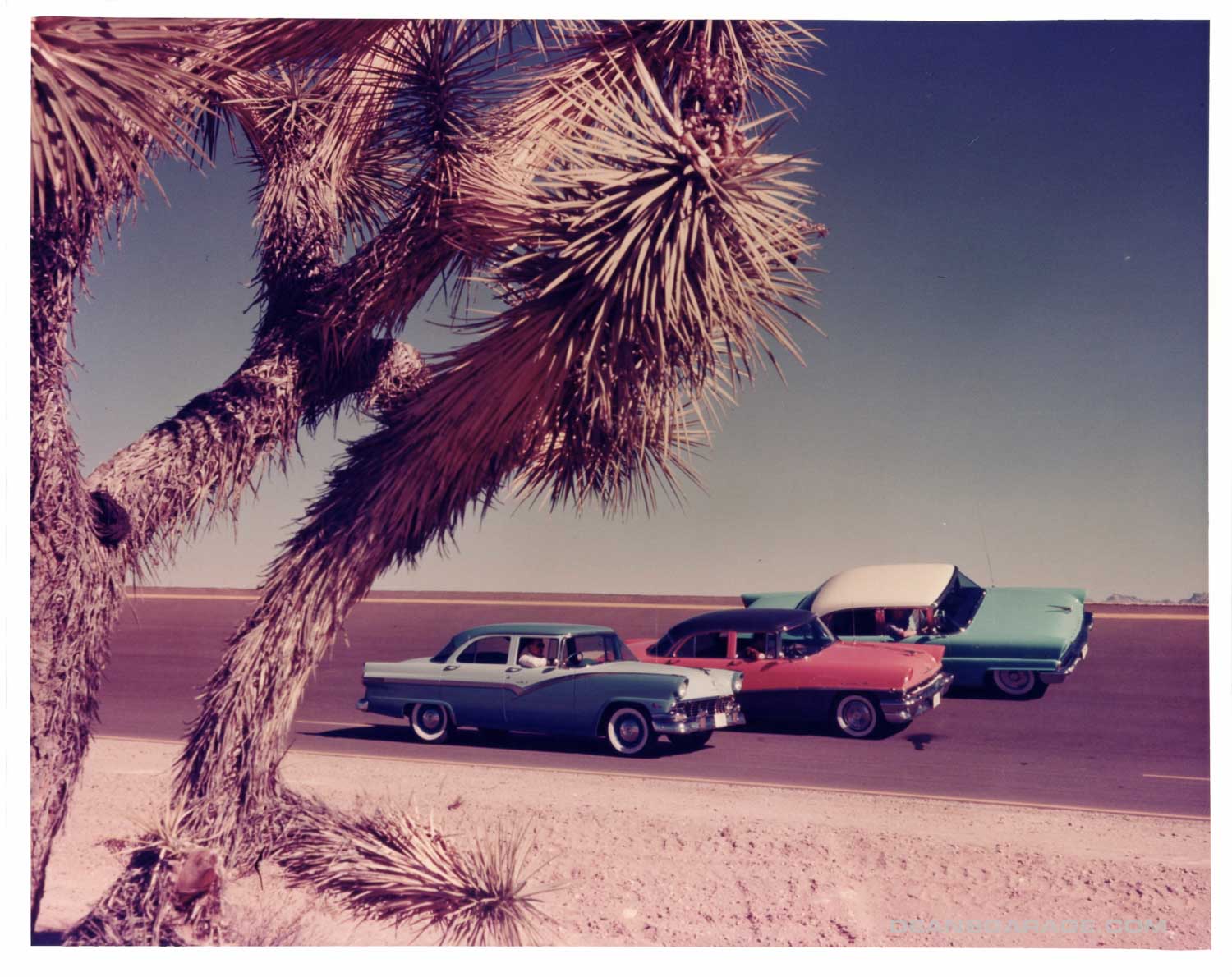
A nice shot of the same Summit Green Lincoln, Mercury Montclair and Fairlane Town Sedan on the high-speed test track. The steep banking is clearly evident.
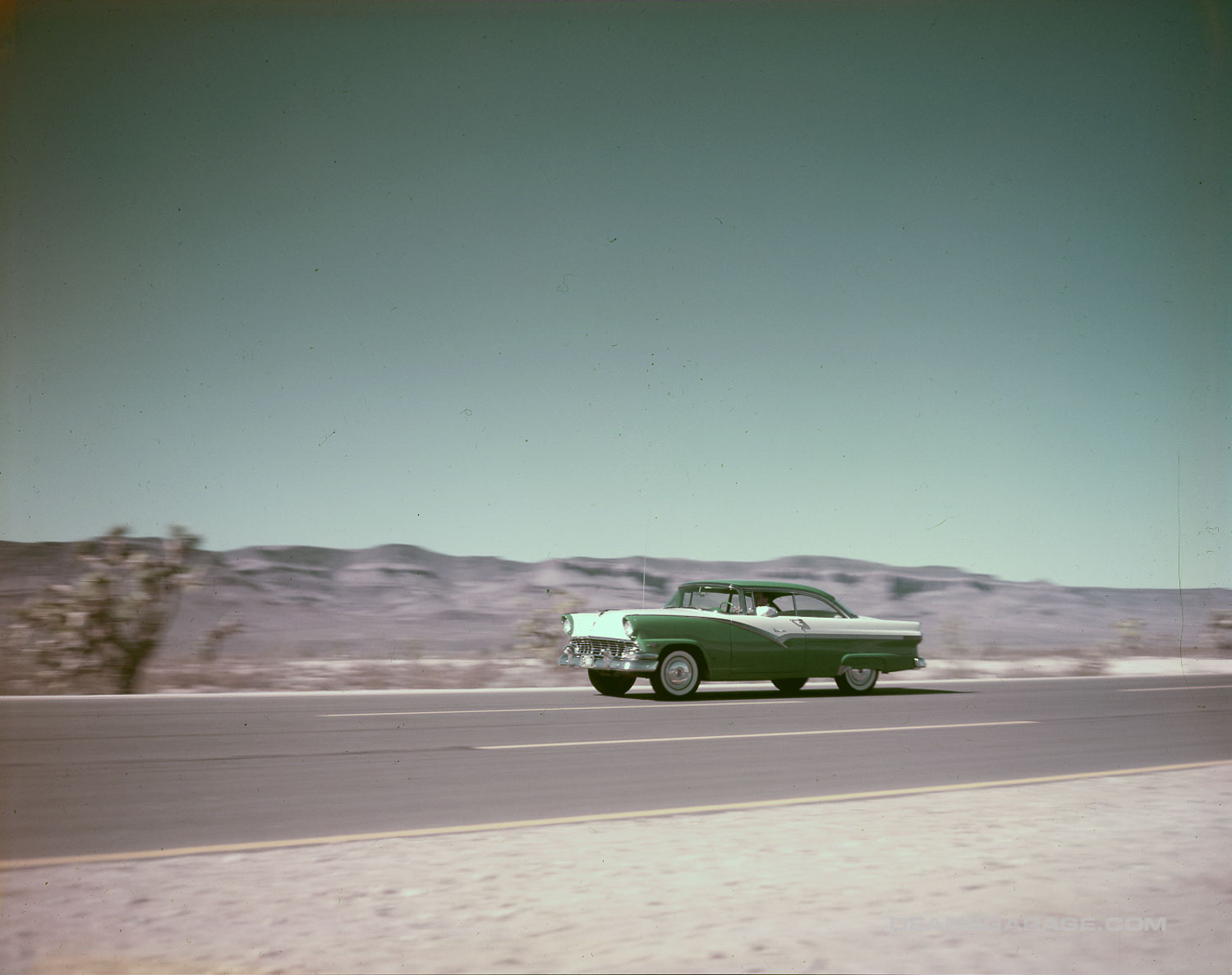
I’ve always been partial to the ’56 Fairlane Victoria. One of the prettiest Fords of the fifties. I remember seeing one from a scene in the movie “American Graffiti” and thought I really needed to find one. I did find a very nice one in 1975 and bought it from the kids of the mother who bought it new. She’s still with us some 49 years later!
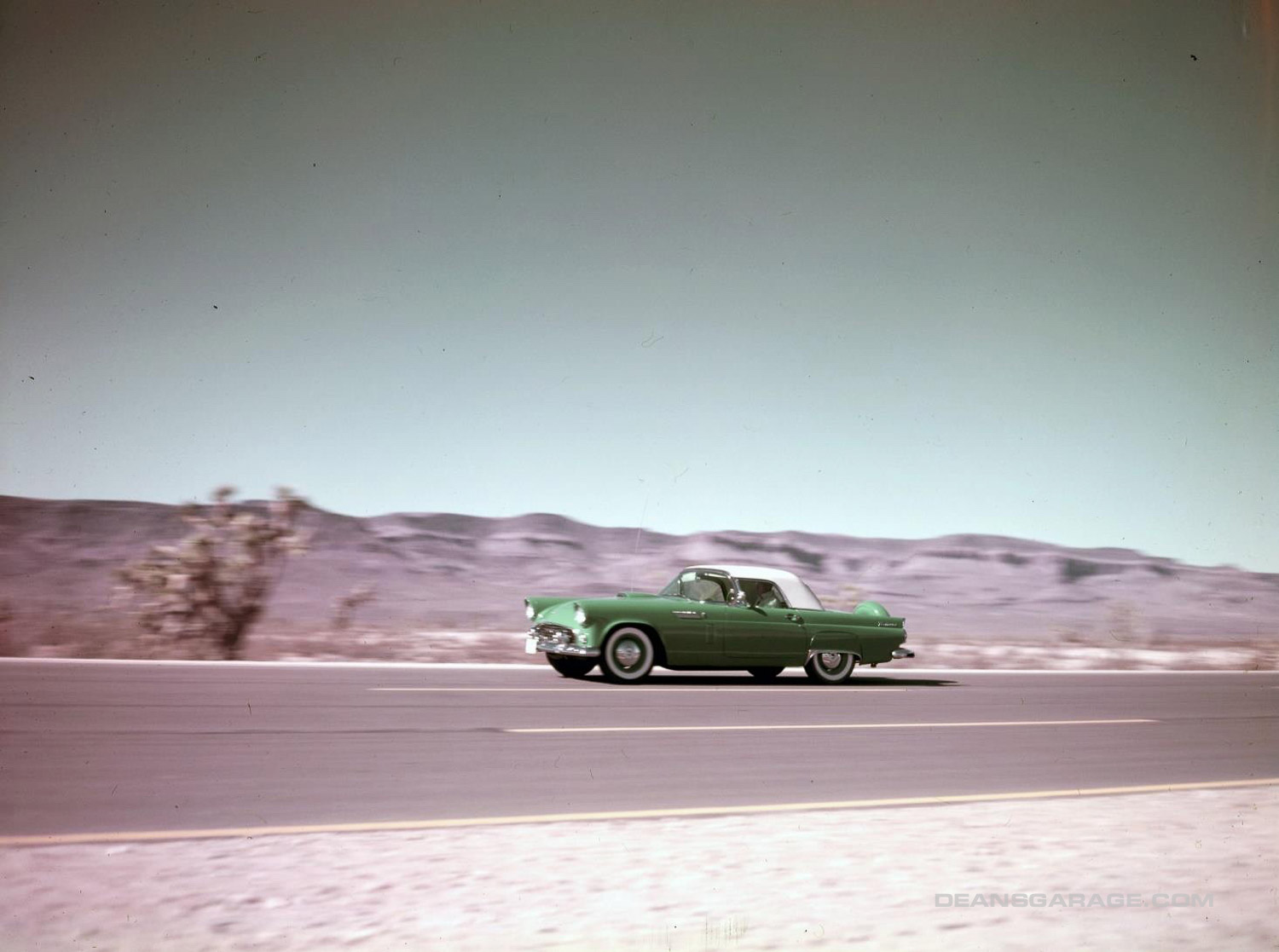
Here’s that same Sage Green ’56 Thunderbird out on the high-speed test track. Green used to be such a popular color in the fifties and sixties.
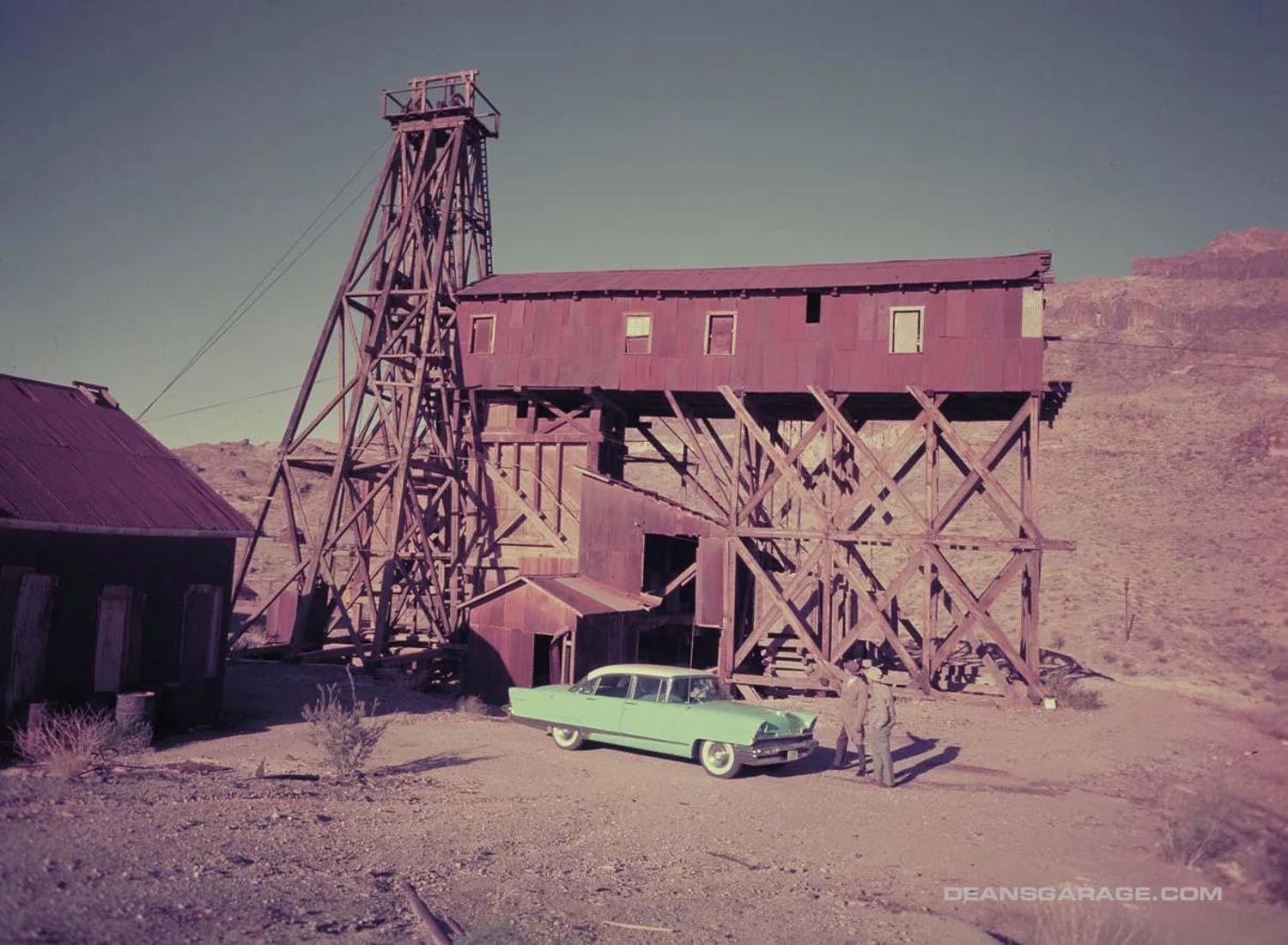
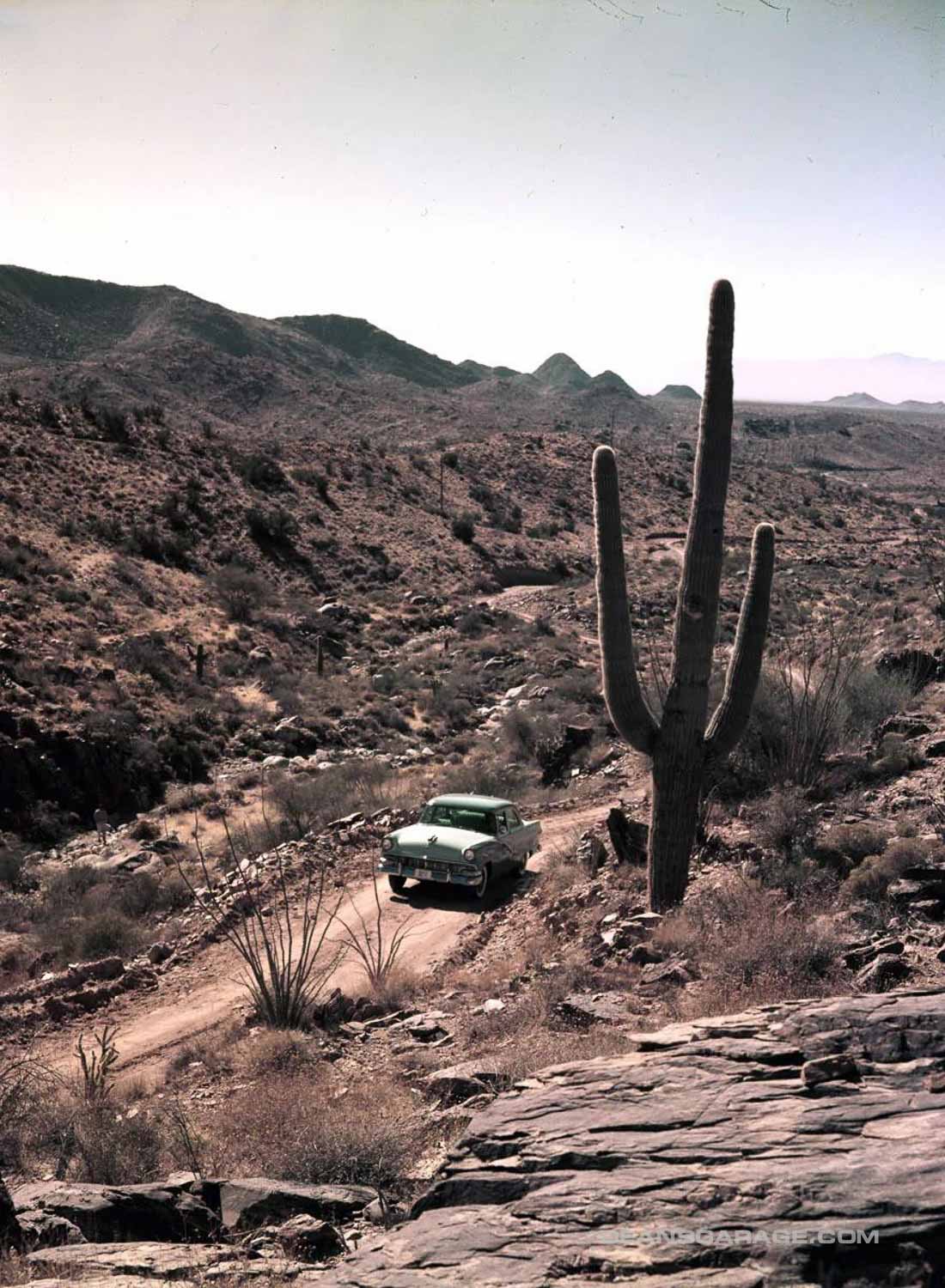
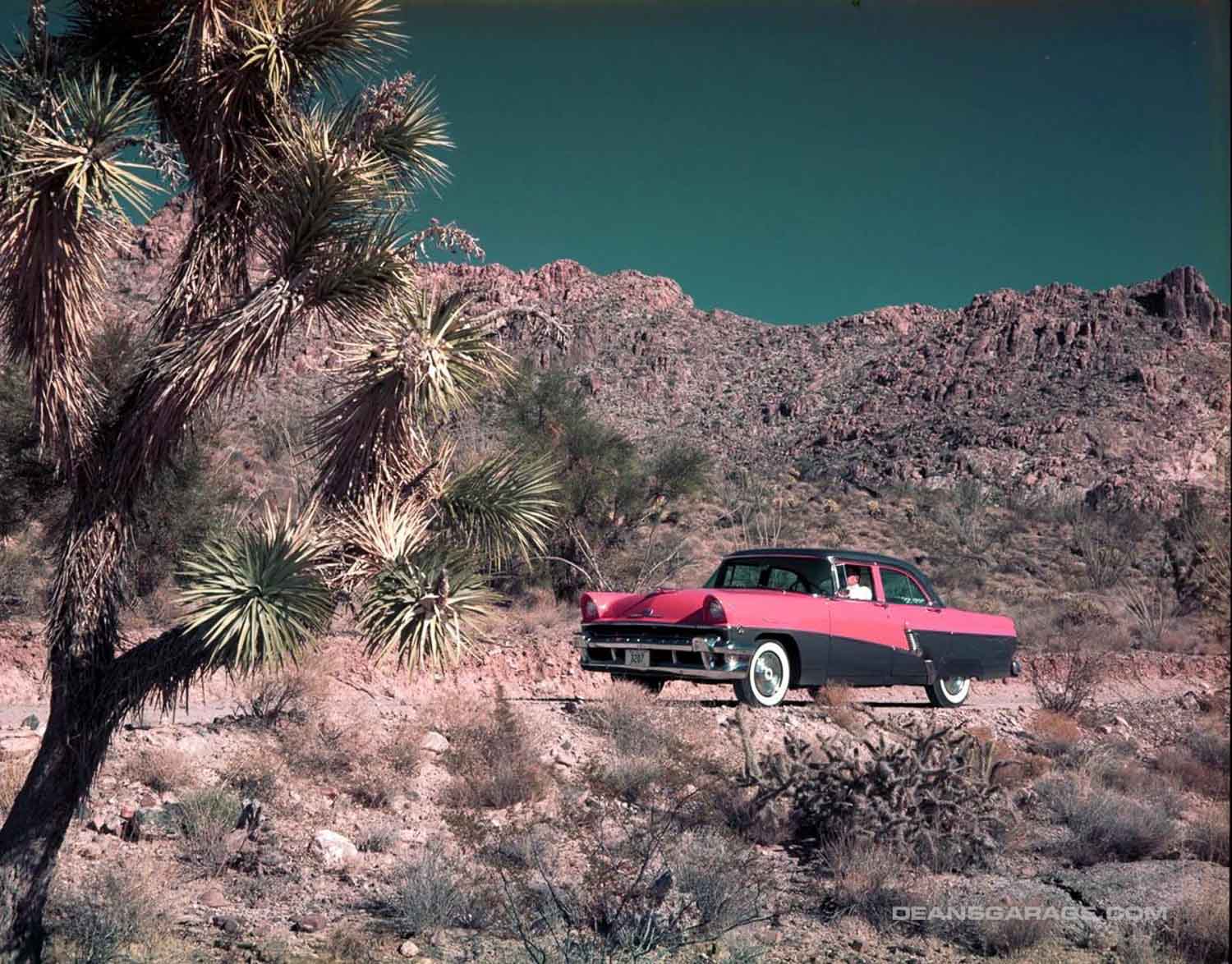
The remoteness of the facility can be seen in these last three photos.
Ford stated in 1957 that during a typical 24-hour period they would have at least 80–120 drivers out on the various tracks and would test some 300 to 400 cars a year at the APG. They also stated in the previous year they had put some 6,000,000 miles on the test vehicles at the APG alone. Testing occurred at all hours of the day and night to quickly accumulate miles. Many of the cars were driven to 60,000 miles as quickly as possible and then completely torn apart and all 16,000 parts were examined for wear. Competitive cars as well.
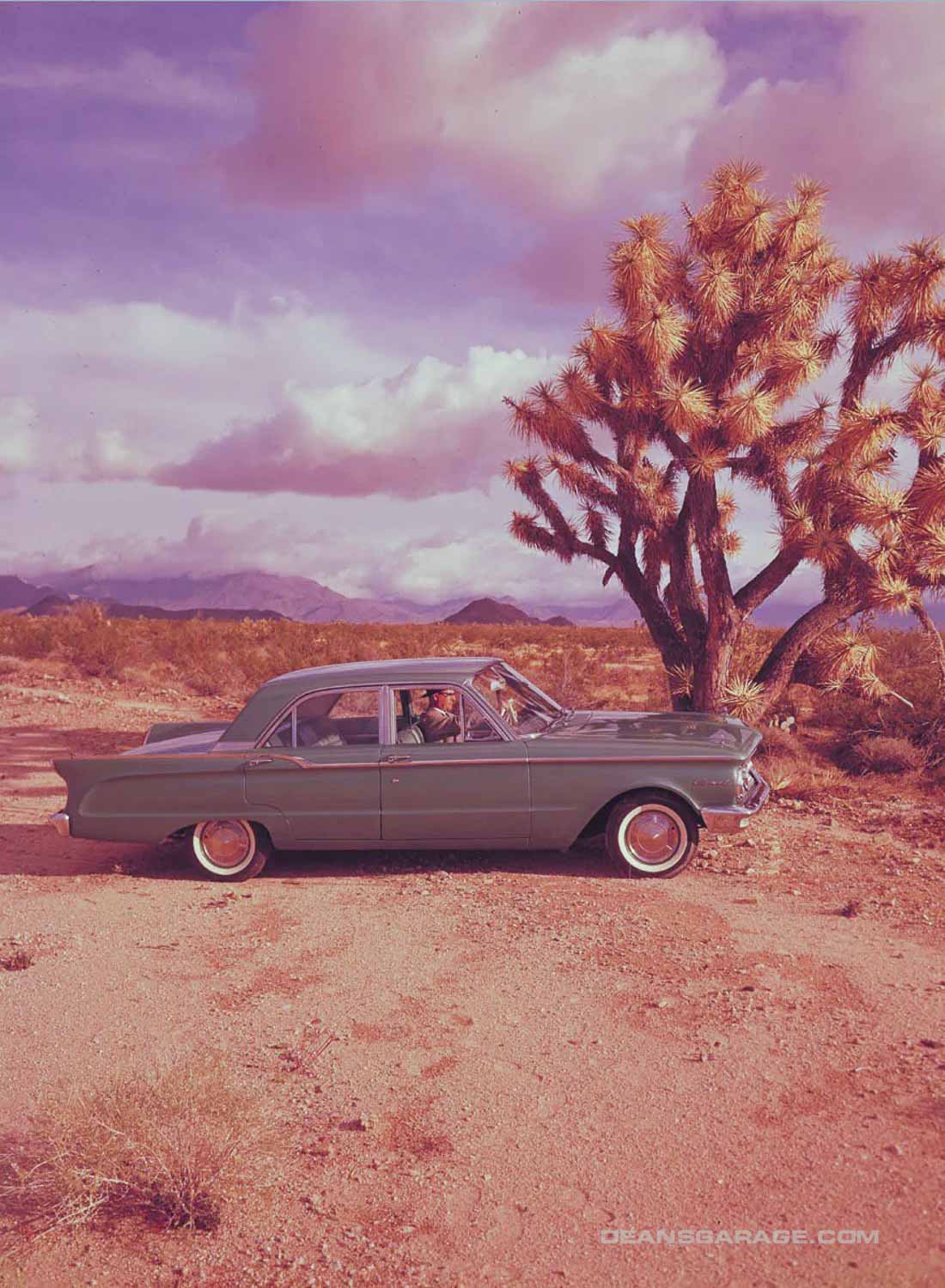
A 1960 Mercury Comet being put through the paces.
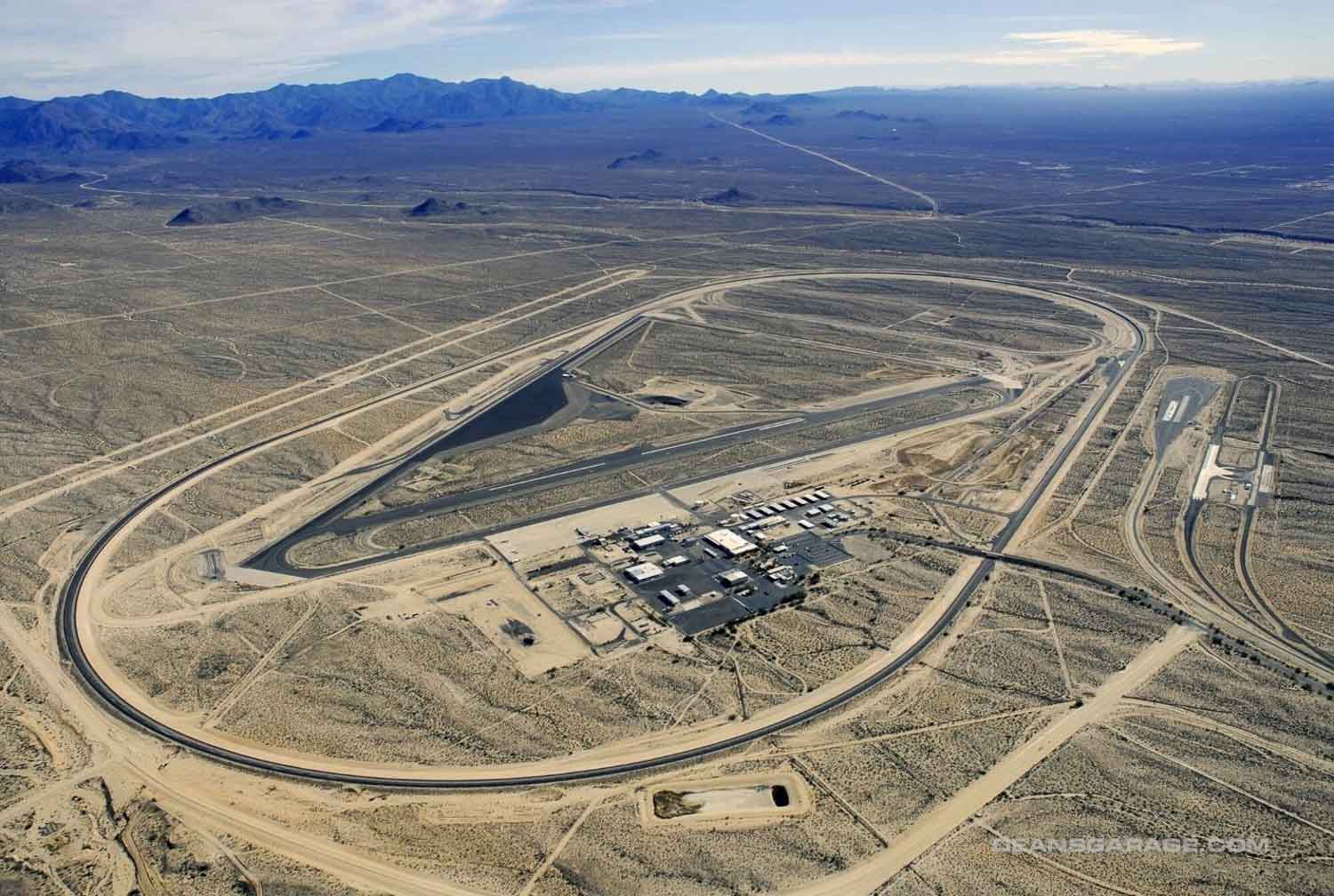
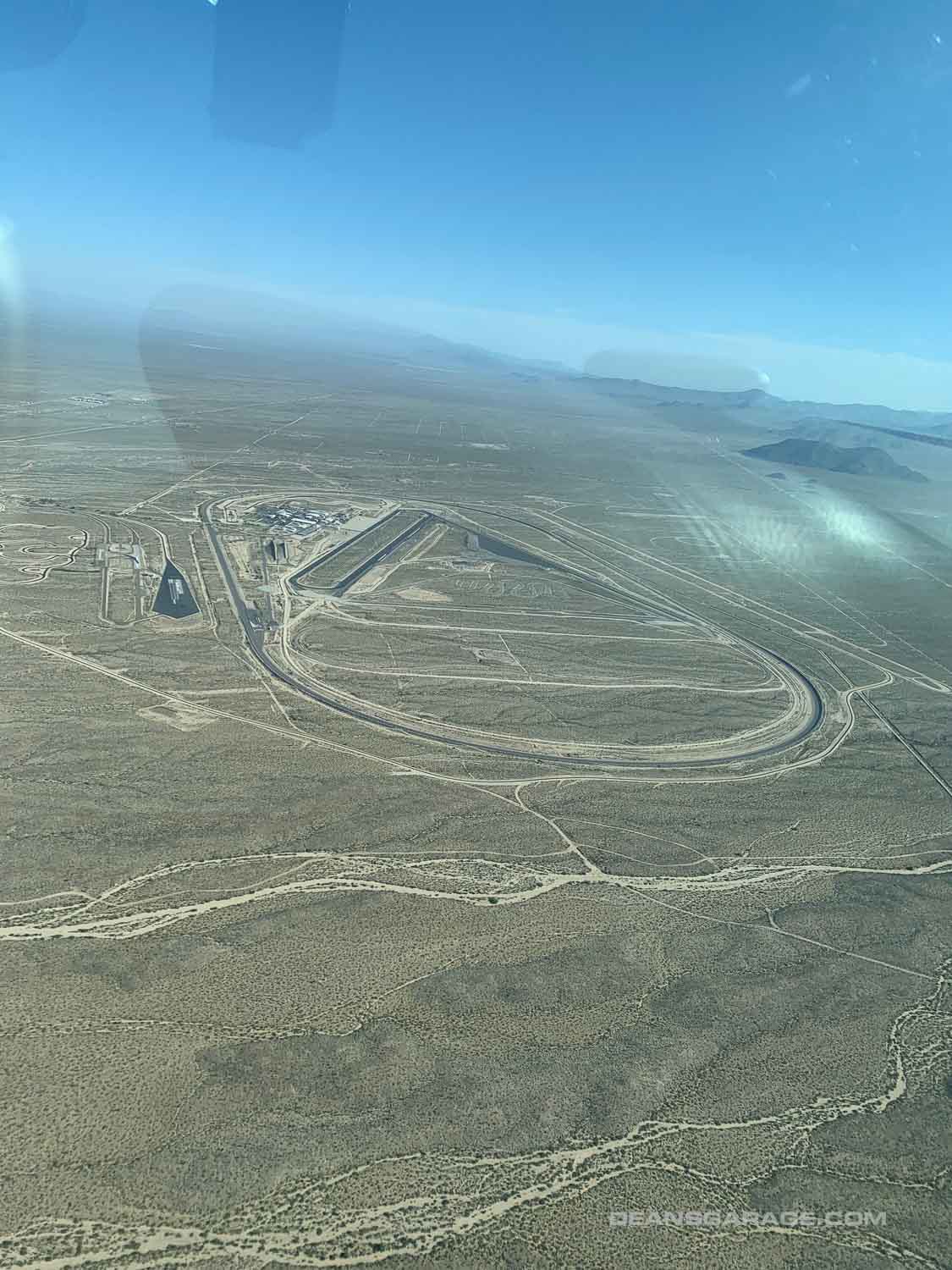
In 1983 Ford celebrated its 100 millionth mile of testing at the APG, and the last 6 million miles without any accidents. They also resurfaced the high-speed test track in 1983.
In 1985 Ford started using a previous Volvo facility just northwest of Metro Phoenix in Whittmann, Arizona. Much smaller than the original Arizona Proving Ground, but much more accessible. On November 2, 2007 Ford elected to sell the APG to Chrysler for $34M. They then renamed the Wittmann facility the Arizona Proving Ground. The new APG remains in use today as well as the original one by Chrysler Fiat, which is now Stellantis. Harley Davidson, and a few other entities, also rent space at the original APG from Chrysler for testing.
You can still see parts of Ford’s original Arizona Proving Ground as you travel today on I-40 south of Kingman. This picture taken in 2008.
This last picture was taken April 28th, 2024.

It was sometime in the late 50s that I went to the race track in Mount Clemens to watch stock car races with three friends. One of them was very much into cars more so than I was. As we left, we saw this car that was all blacked out, flat black, he said that must be the new Continental. Well, the rest of us didn’t even know the Continental existed, but I really remember clearly this matte black car that we thought was quite nice looking.
Something unusual is going on with the pictures: the cars appear in color but the rest is an off black and white. Any explanation?
Back in pre-historic days when dinosaurs roamed the earth, cameras used analog film made by the Eastman Kodak Company. Exposed film was called a negative. Negatives were then used to make positive prints. Over eons of time (or a few decades), black and white prints would often shift towards yellow, and color prints would fade and shift color. This post’s images uses supplied scans of old prints that have thus deteriorated and have not been restored. —Gary
I must say I don’t remember ever seeing one of those remarkable 4 door hardtops and that Red and White Mercury Pheaton was quite the flashy beauty!
The “check the oil stop” appears to be on Pikes Peak, which attracted testers because of its altitude, which stretched the abilities of carburetors, cooling systems, and brakes. Colorado remains a popular testing location, mostly on public roads.
On the color/quality of pictures, some appear to be taken from early color training films and have deteriorated naturally, especially reds and greens, which tend to turn pinkish when used as positives.
Somehow, that driver of the black/white Sunliner looks an awful lot like Fred McMurray.
“Styletone” was a term Ford used to indicate one color sandwiched between another. Styletones in ’55 and ’56 tended to look top heavy. Since the trend was toward longer, lower, wider cars, in ’57 the placements were swapped, with the darker (heavier) color on the bottom.
Notice the Fiesta Red/Colonial White Sunliner sans wheel coverings. The black steering wheel indicates testing prototypes through 1959.
4-door hardtops were all the rage by 1956, but only Lincoln and Studebaker didn’t offer a 4-door hardtop this year.
Notice, too, most of these cars have hub caps, rather than wheel covers, which fell off as easily then as they do today. Also, notice the home-made wheel covers on the Mark IIs.
Did anyone catch the Oklahoma State Police unit is a ’54 Tudor Customline, rather than the less expensive Mainline?
The Comet was marketed as a separate line, like English Ford and Taunus, and didn’t acquire Mercury parentage until 1962.
One of the first projects of the APG was testing paint colors and their ability to hold up in weather extremes. In 1957 Ford introduced Silver Mocha, a beautiful, deep metallic chocolate brown color. It held up well in the northeast, but deteriorated rapidly to an ugly flat charcoal in the hot southwest climate and went through several revisions before being deleted.
Thank you for a marvelous tour on yet another rare, untouched corner of fantastic Ford lore and history! Keep up your great work.
Interesting story.
Your good comments, Fotios, raises several interesting points. And Gary is exactly right about the affect of time on color negatives.
Just for background I acquired most of these pictures for this story (and previous ones) back in the late 80s and early 90s. At that time I had access to all the negatives in Photomedia. And there were literally hundreds of thousands of images there at the time. I would pull negatives of which I would like a print of, and Ford would graciously print them for me as 8X10s. I probably have about 4000 prints.
At that time I would guess that 95% of the negatives there were black and while. Color film being so expensive it was obviously used sparingly. In addition, for color shots, Ford mostly used a large format, single shot, studio camera. It created an 8×10 negative. Quite large.
It truly is amazing that these negative held their color and sharpness this long. Some are more faded than others, but overall its amazing how well those negs have held their color. It’s also interesting that Ford took so many color shots at APG considering most everything of that vintage was black and white utilizing a 5×7 negative. Which explains some of the crispness of these nearly 60 year old pictures. Really big negatives compared to 35MM.
Color and sharpness is also reduced somewhat as these are mostly scans off an 8×10 print from the original negative.
Glad you enjoyed the story!
Todd
I happened to see these Mark IIs when they passed through Santa Fe, NM one Saturday afternoon. What a surprise that was.
Addendum: The gorgeous 1960 Comet is an unseen, created publicity photo. The car was photographed in a secure location, then cut and super-imposed on a selected background. Ford did this frequently to show their unannounced cars in non-winter environments. All they needed here was the car, the Joshua Tree and a warm background.
This photo never made print, likely because a proofer questioned the wisdom of someone driving a car directly into a high berm of dirt. Notice the brownish degradation of the photo has baked the car from Twilight Turquoise to a muted gray=green.
Never overlook the small details!
Further addendum re: 1960 Comet.
Dean’s Garage host Gary Smith sent me an enlarged photo of the 1960 Comet. After studying this shot, it became apparent this car is a full-sized styling model; and probably the only 1960 Comet 3-Door Sedan ever designed. Note, also, the flat plastic windshield, the inconsistent upholstery, the large door gap on the B-pillar, and the driver posed as if he’s going down a super highway, not about to turn off a dirt road to go bouncing across the desert.
Most compelling, the car is a 2-door on the driver side and a 4-door on the passenger side.
This state of the art overlaying procedure is not a form of Photoshop. It was used frequently (at least by Ford) and may still be in use today. For more examples of photo overlaying, see the new-car announcement issues of Ford Times magazine.
Thanks again, Gary.
You had me hooked with your first instalment, Todd but I think you managed to top that, here. The photos are incredibly atmospheric. I laughed out loud at Ford top brass arriving by GM powered planes. And who says the camera never lies? Maybe Photoshop had a different name back then but the care taken to overlay (or cut n’ paste) was exceptional. As for selling the joint for $34M – was that a bargain?
Thanks for sharing all this, Todd and to Gary for keeping this website a rich source of fantastic information
I just happened across your site and must say, great information and stories! I am a Ford guy, but as a true car guy I appreciate them all. I have been looking for any information and more specifically photos/videos of Mustangs from the Ford testing facilities (Dearborn, Romeo and Kingman) in the 1968/69 era. Is this something you may have or suggest other places to look? Thank you.
Dear Robert,
Thank you firstly for the kind comments and glad you enjoyed the story and others on Dean’s Garage. Unfortunately my photo archive of the three major Ford test tracks really becomes rather thin after about 1963, so I don’t have the Mustang pictures you’d like to see.
I wish I could point you in the right direction other than the countless books out there regarding the fascinating history of the Mustang. But I really don’t know what to suggest other than that.
Again, thank you for writing and your comments
Todd Duhnke
Stellantis announced last week in Automotive News that it was going to attempt to sell the Arizona Proving Ground. They stated that they will rent space and time at a Toyota facility in Arizona.